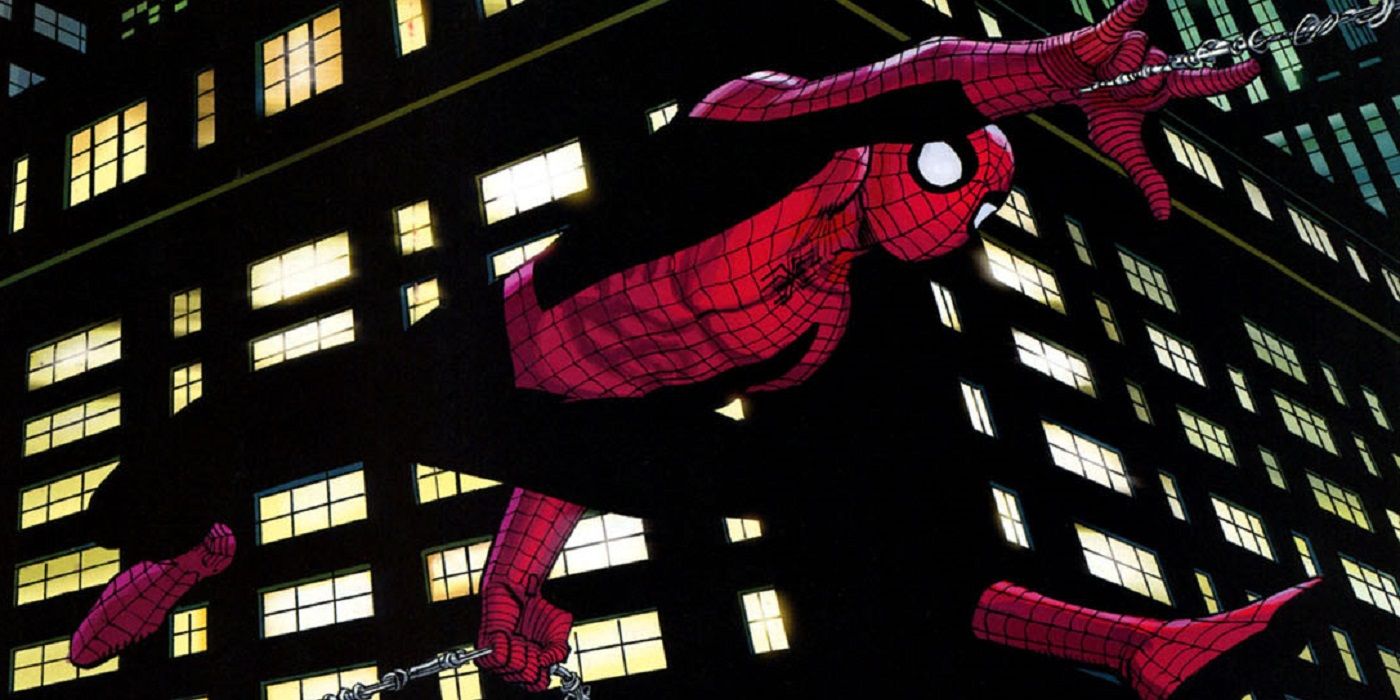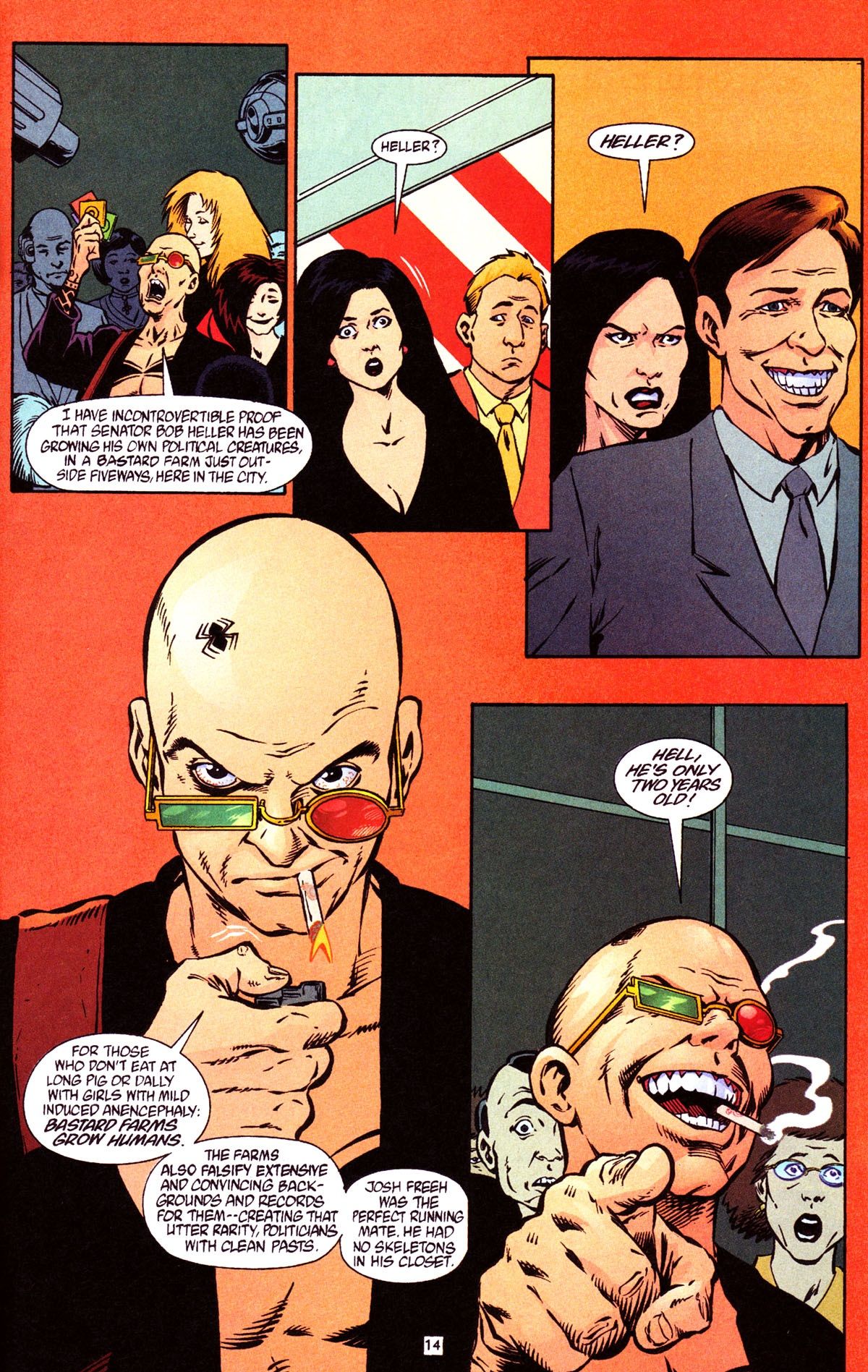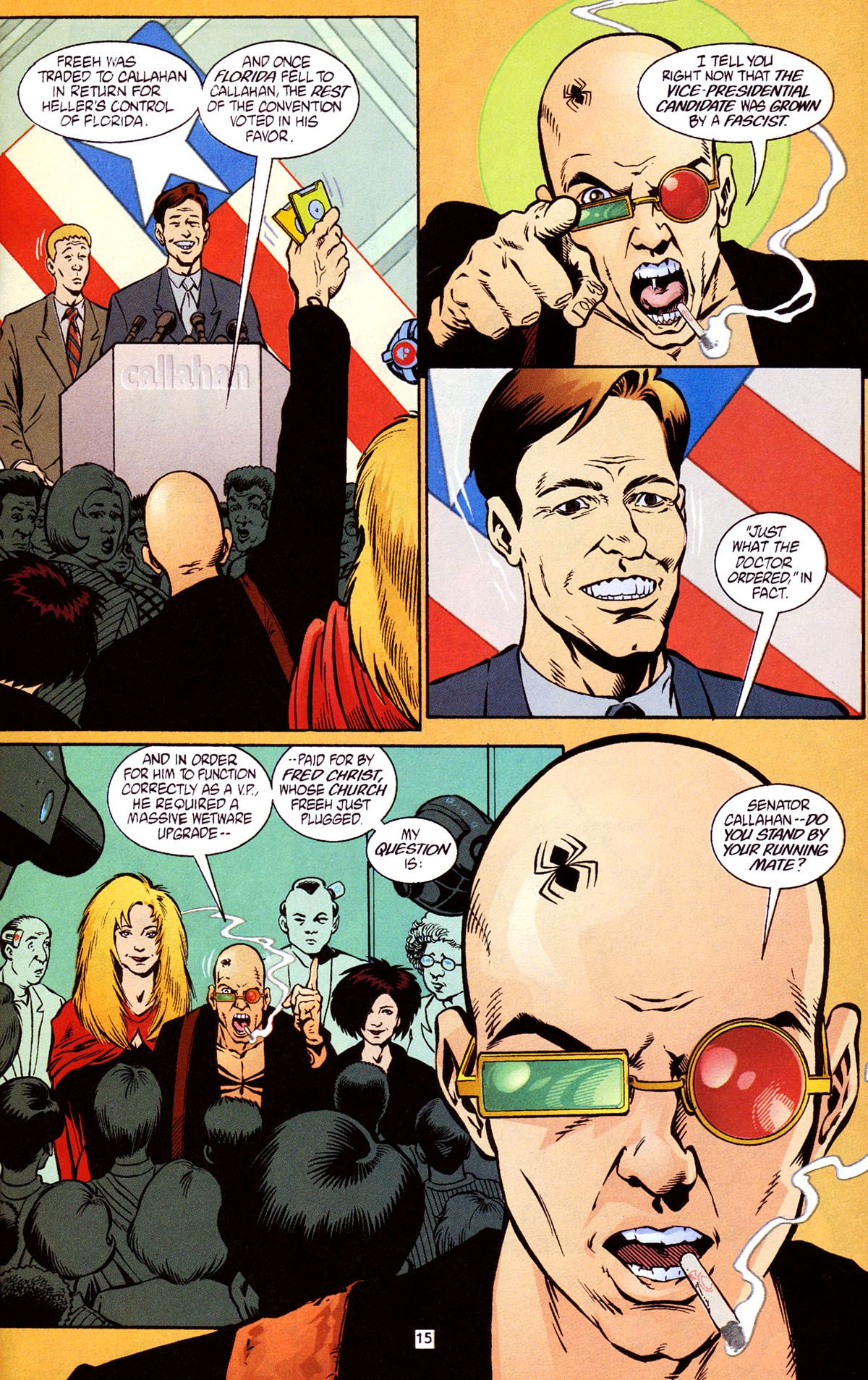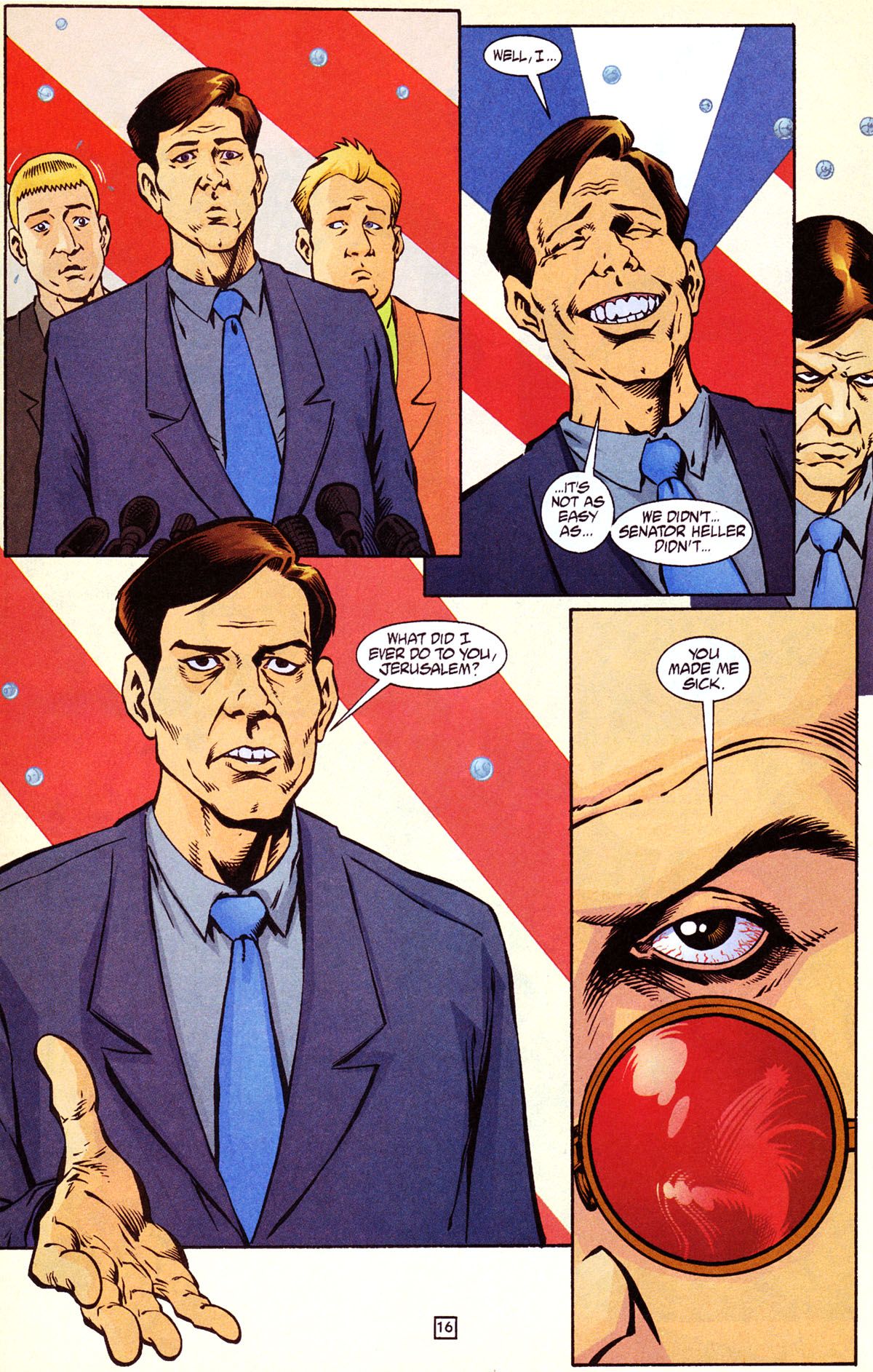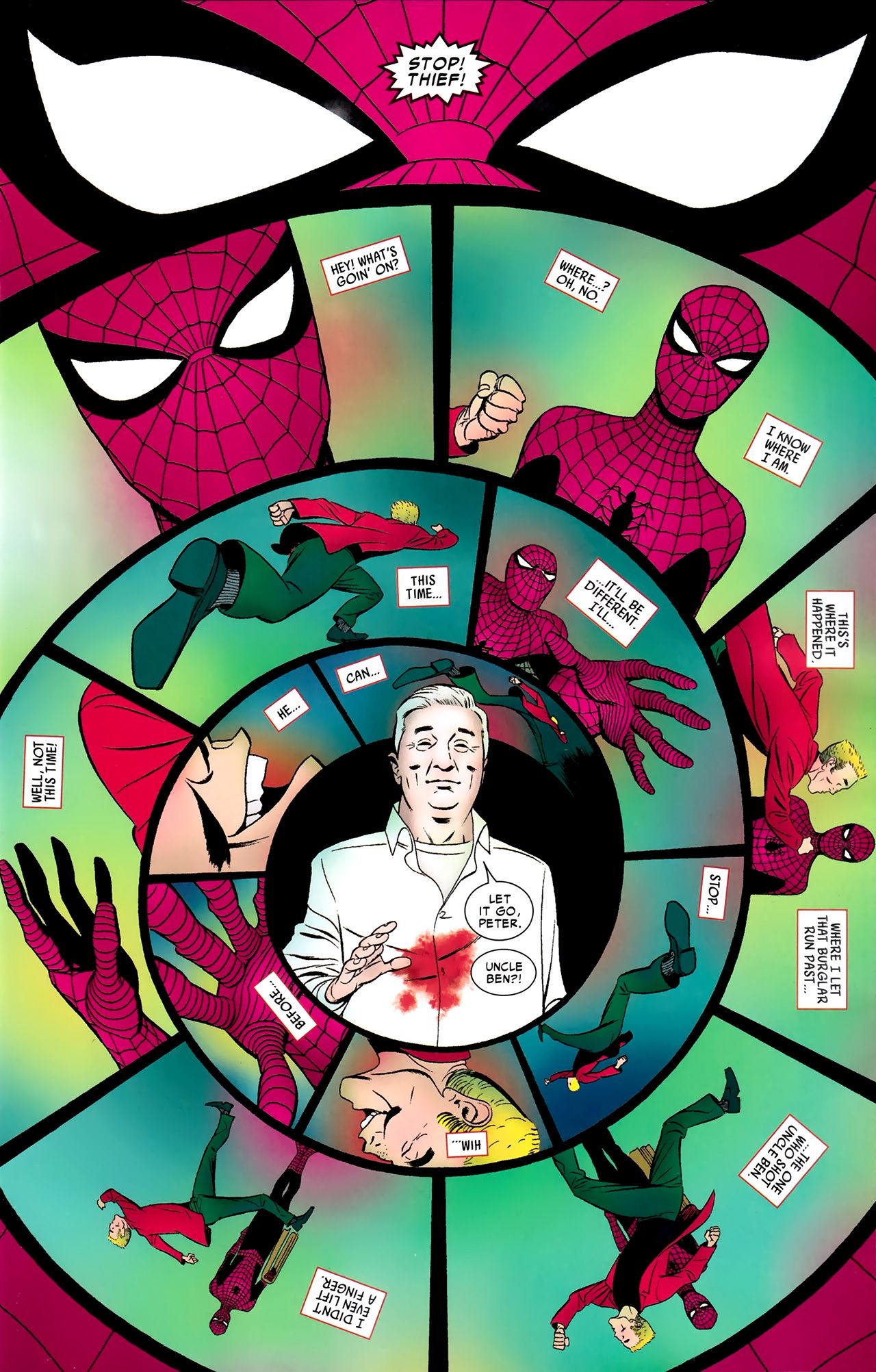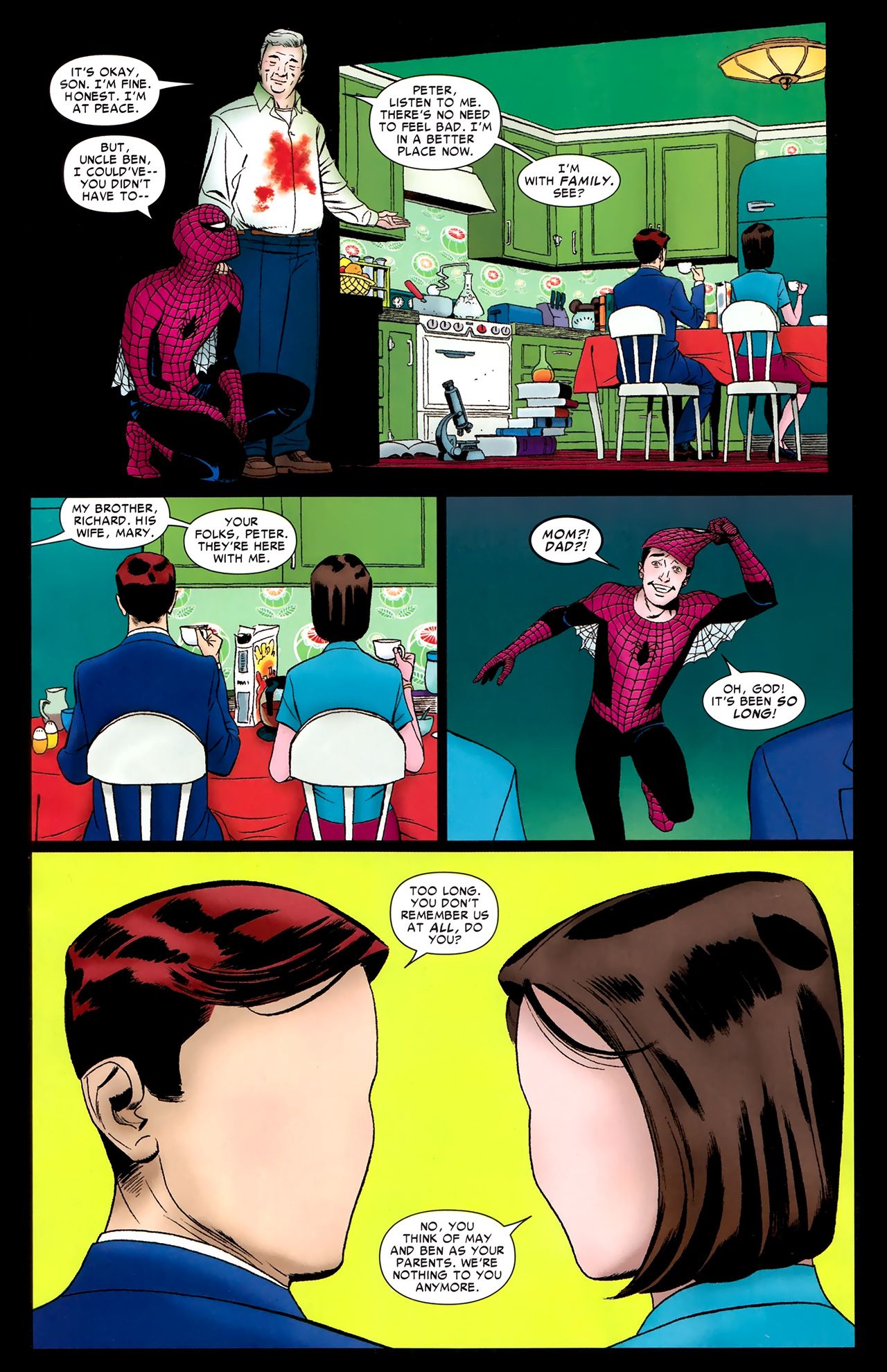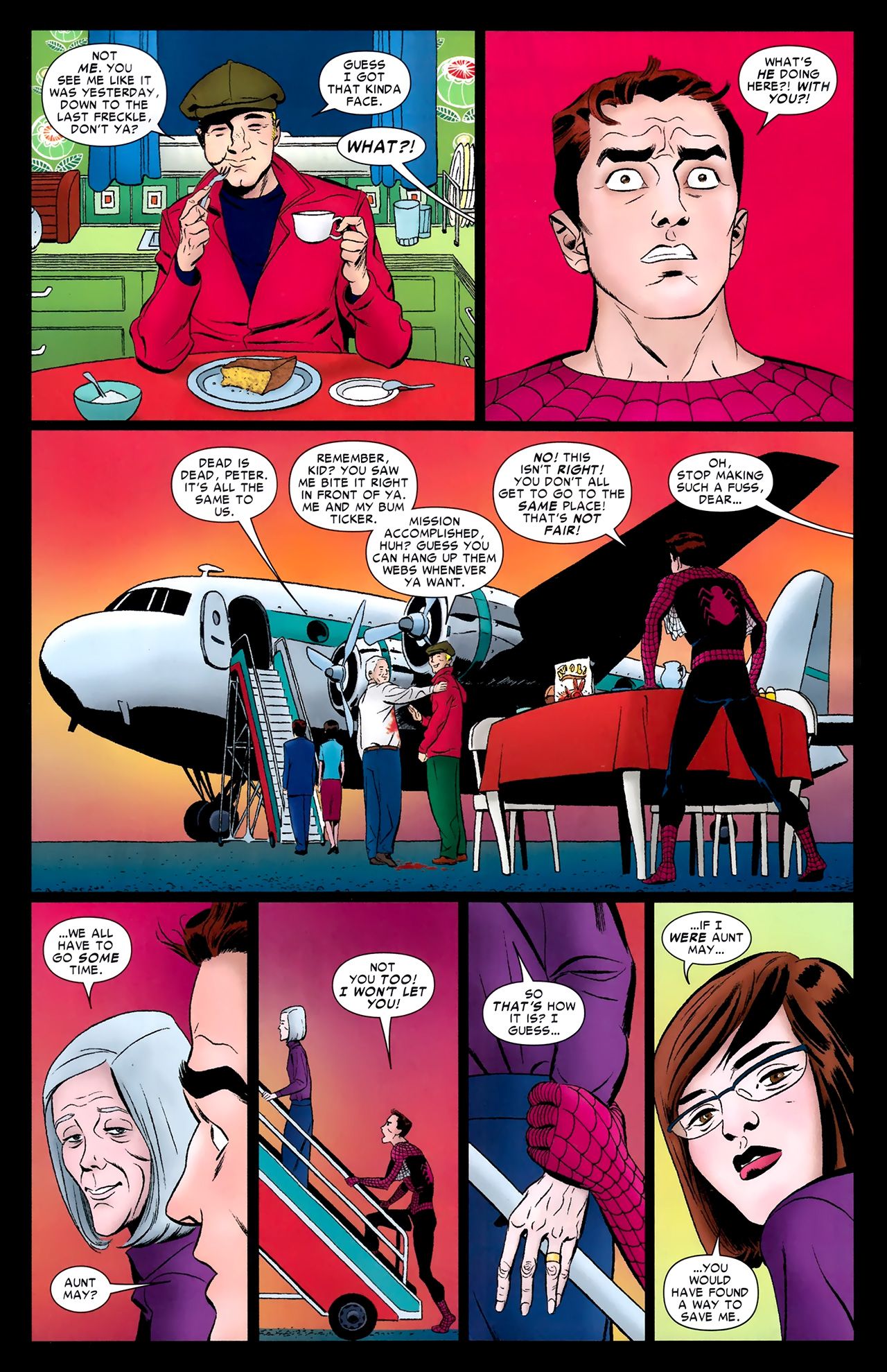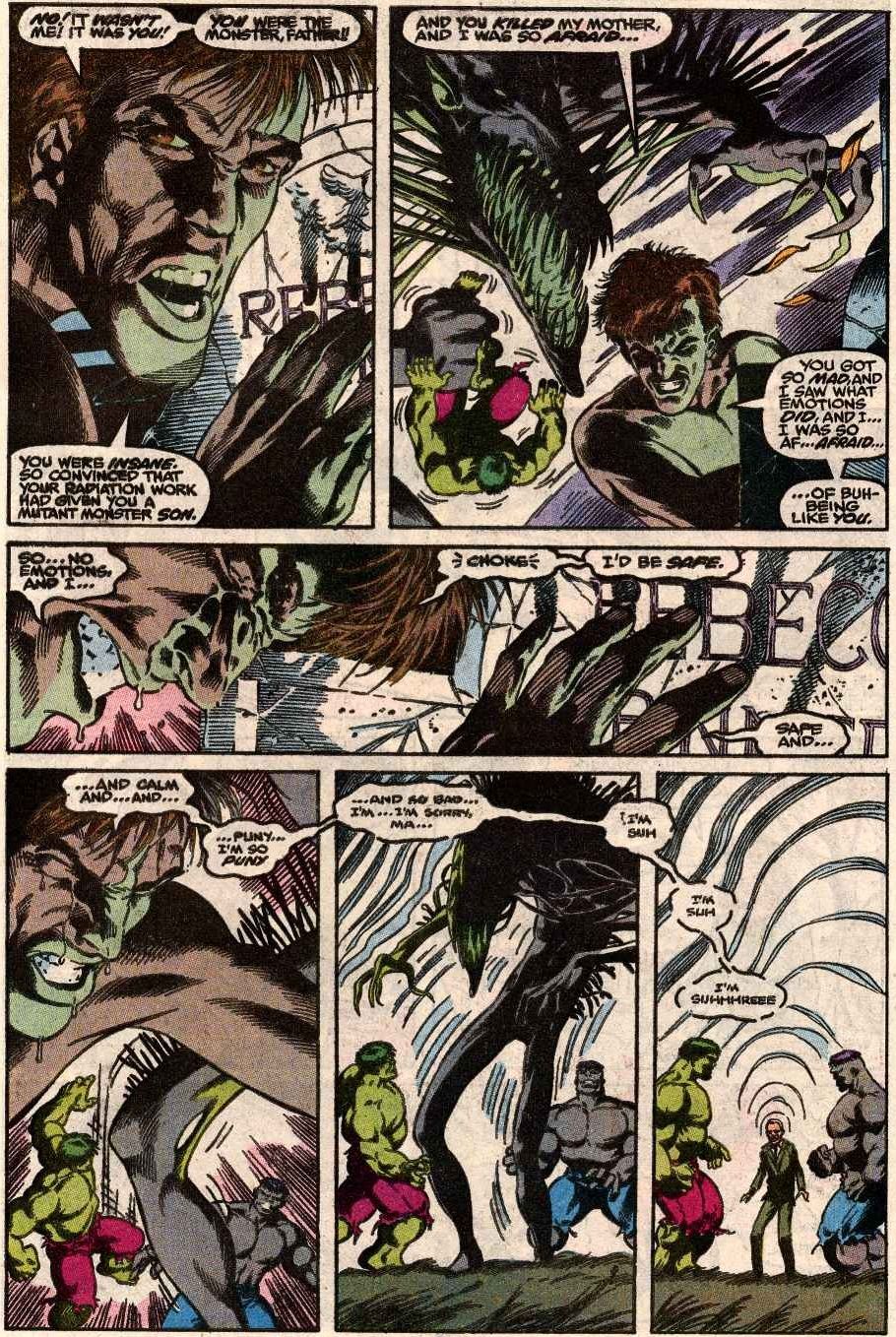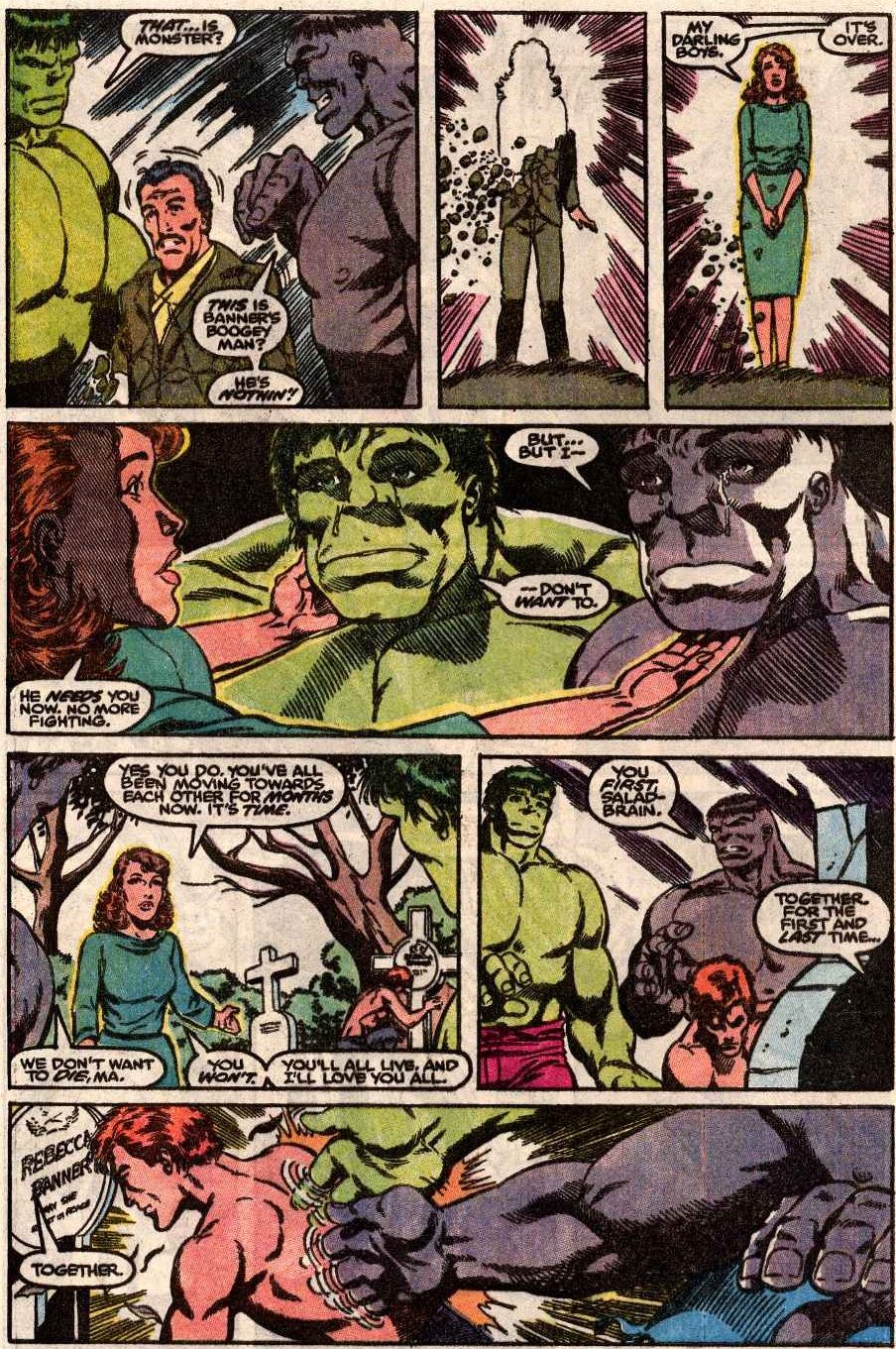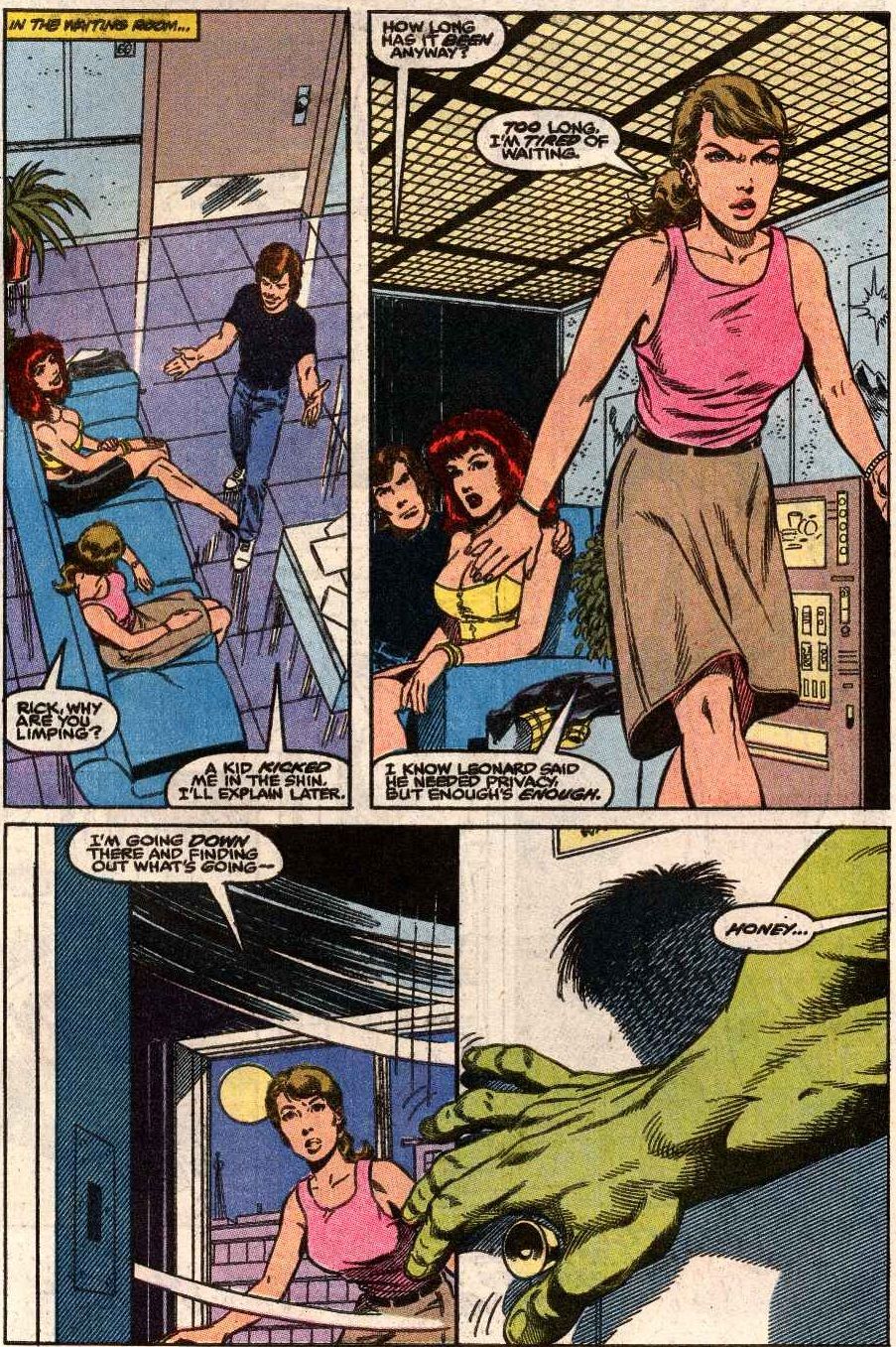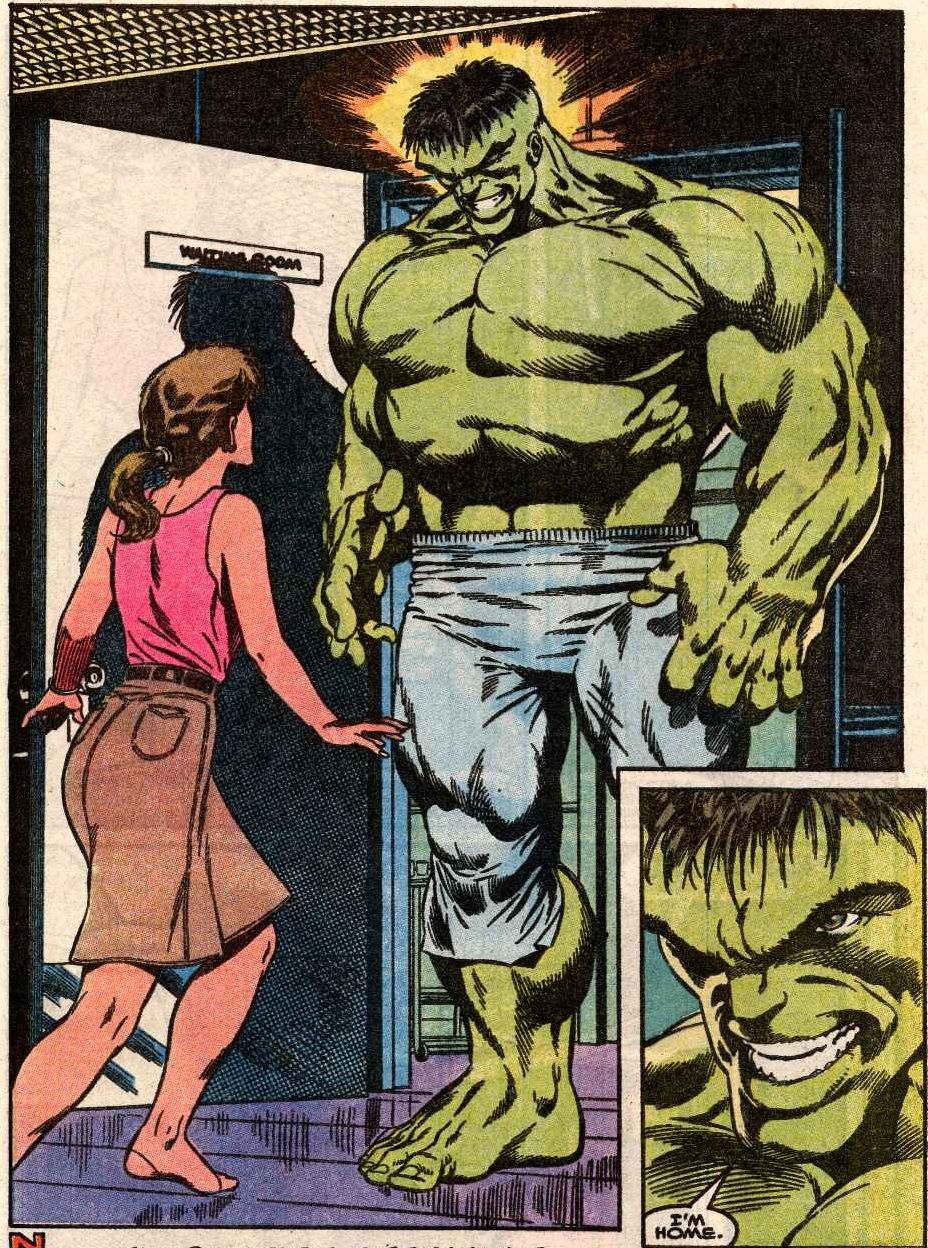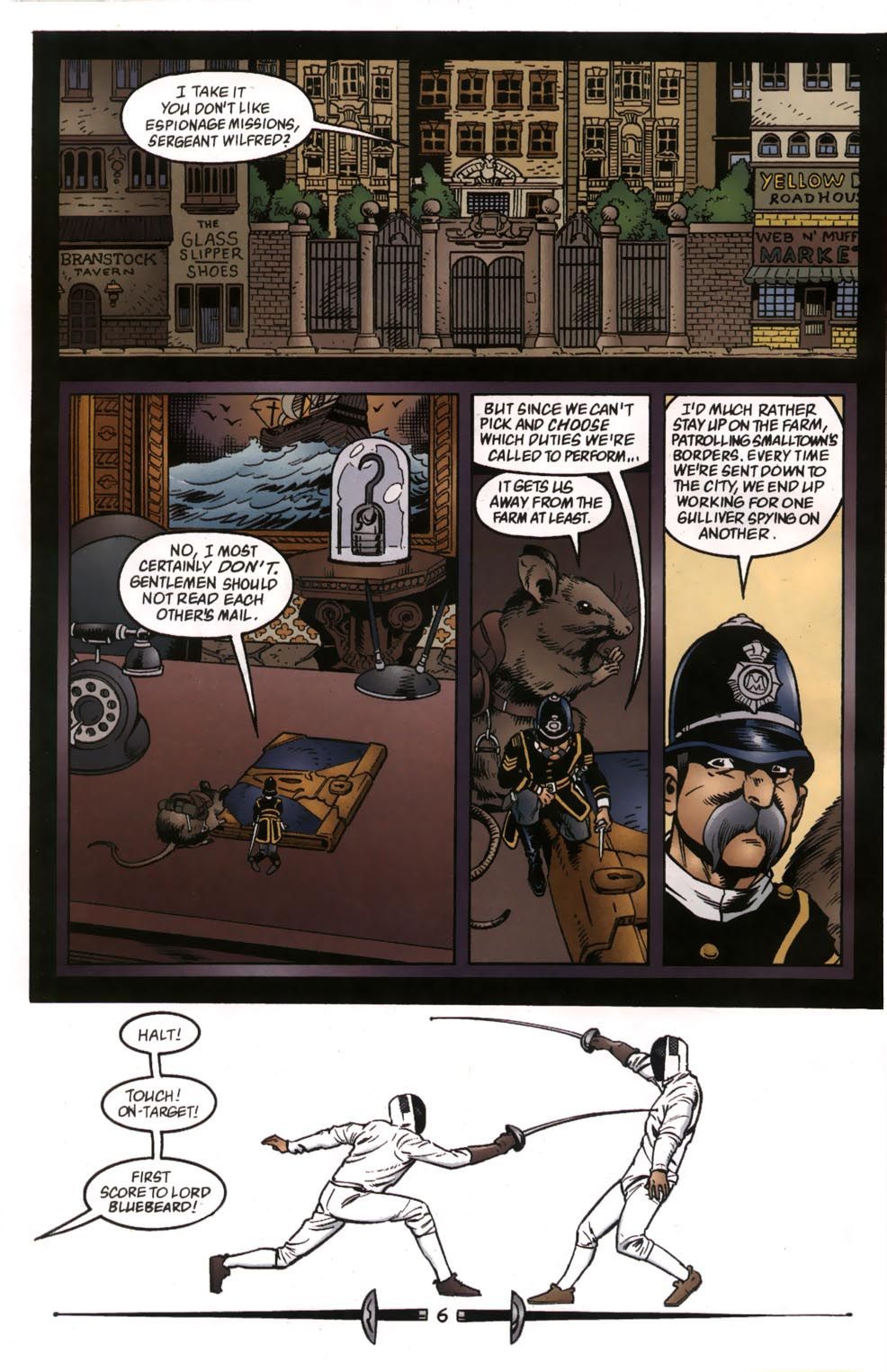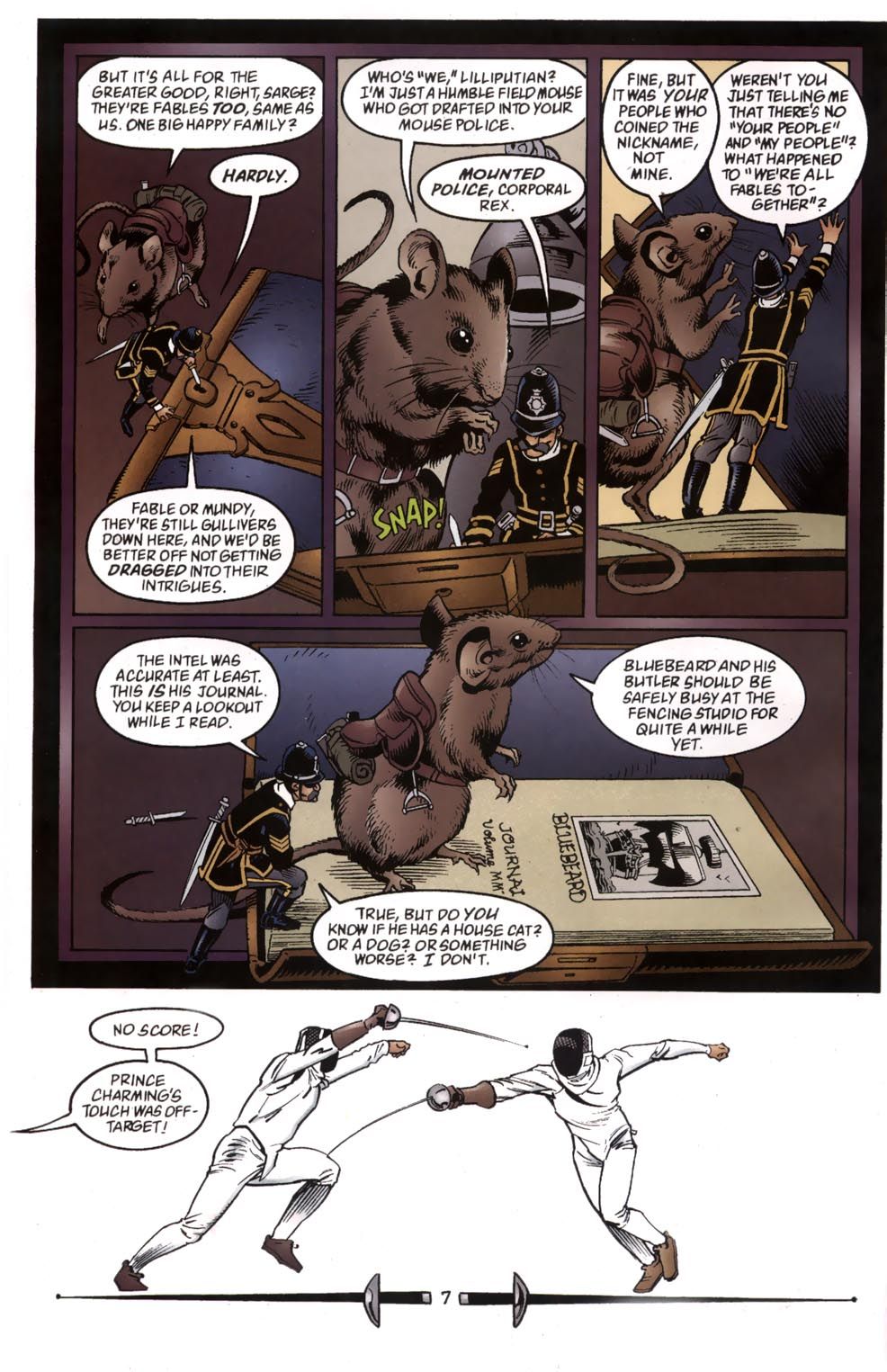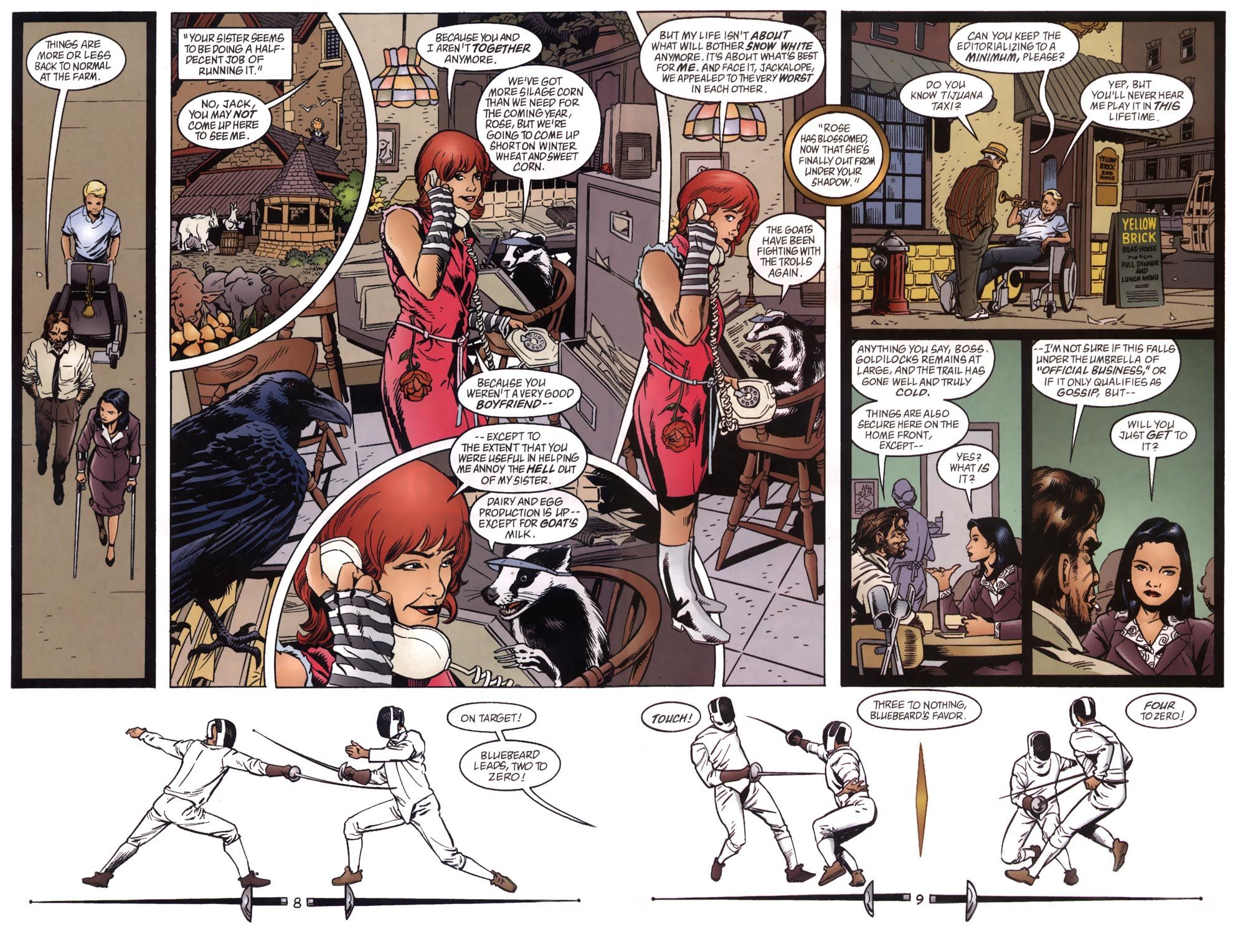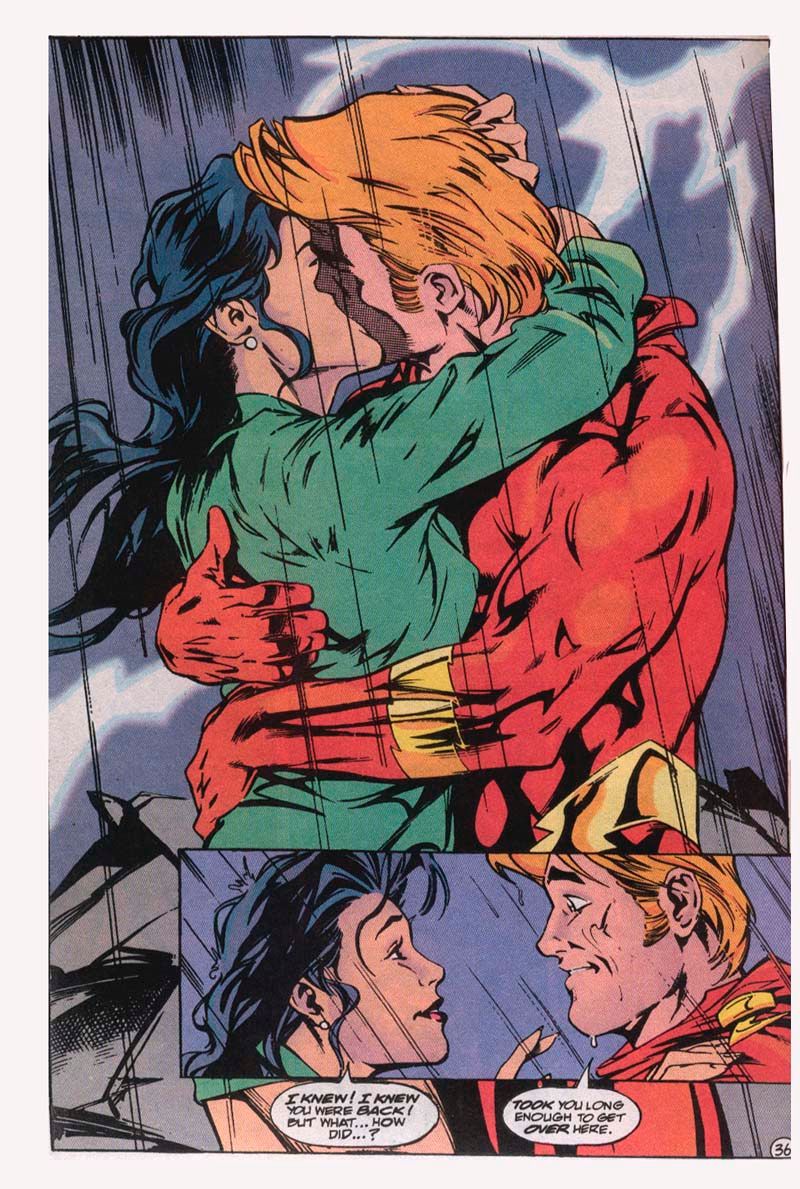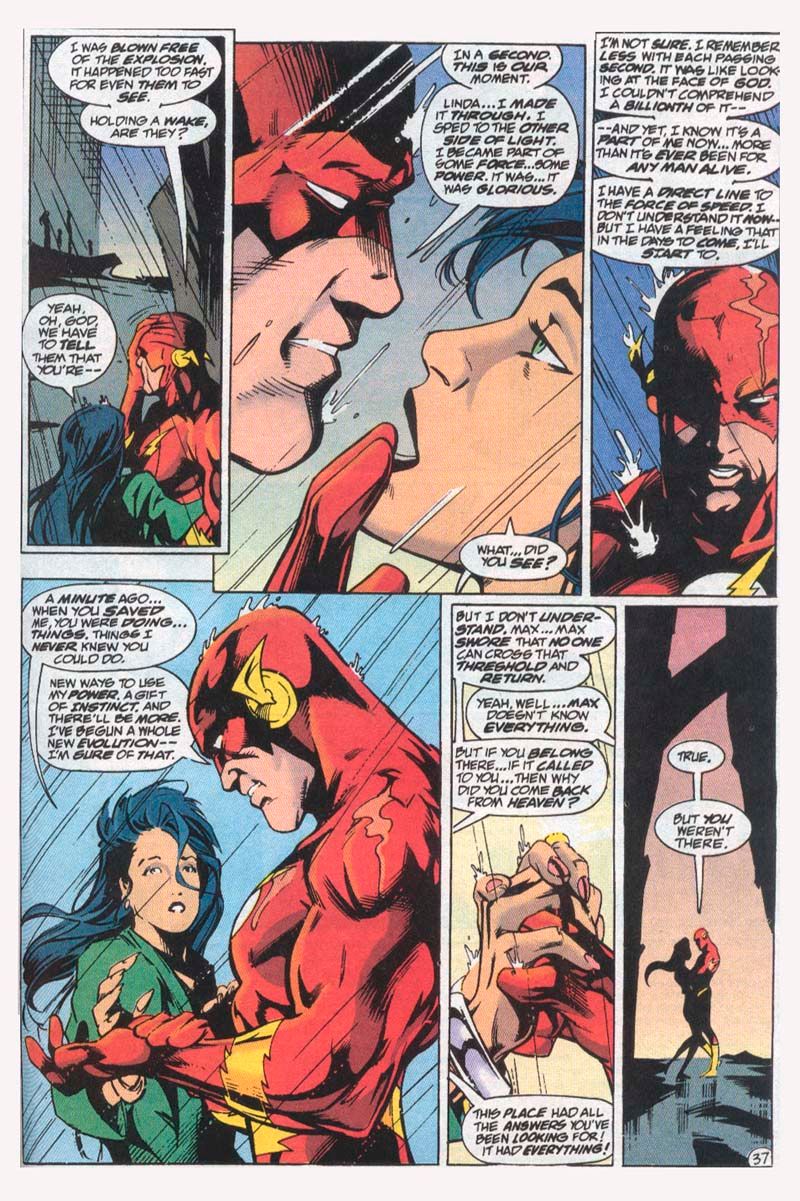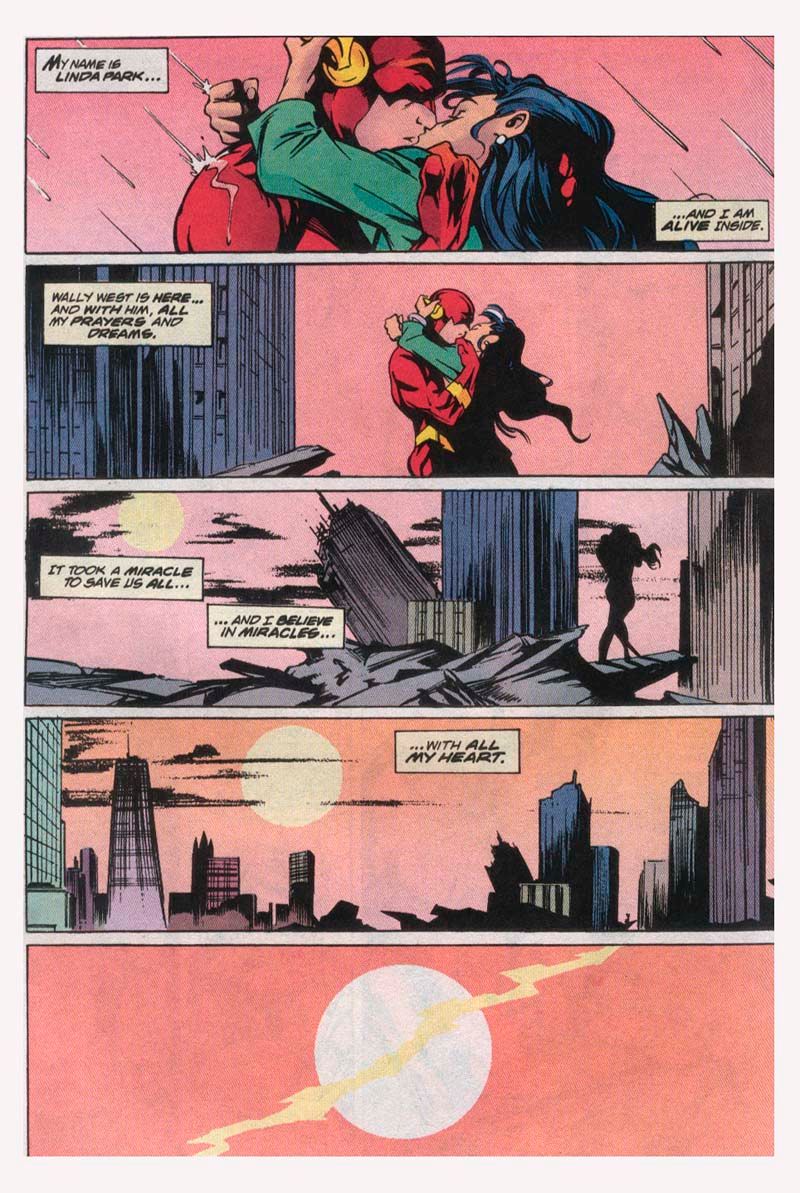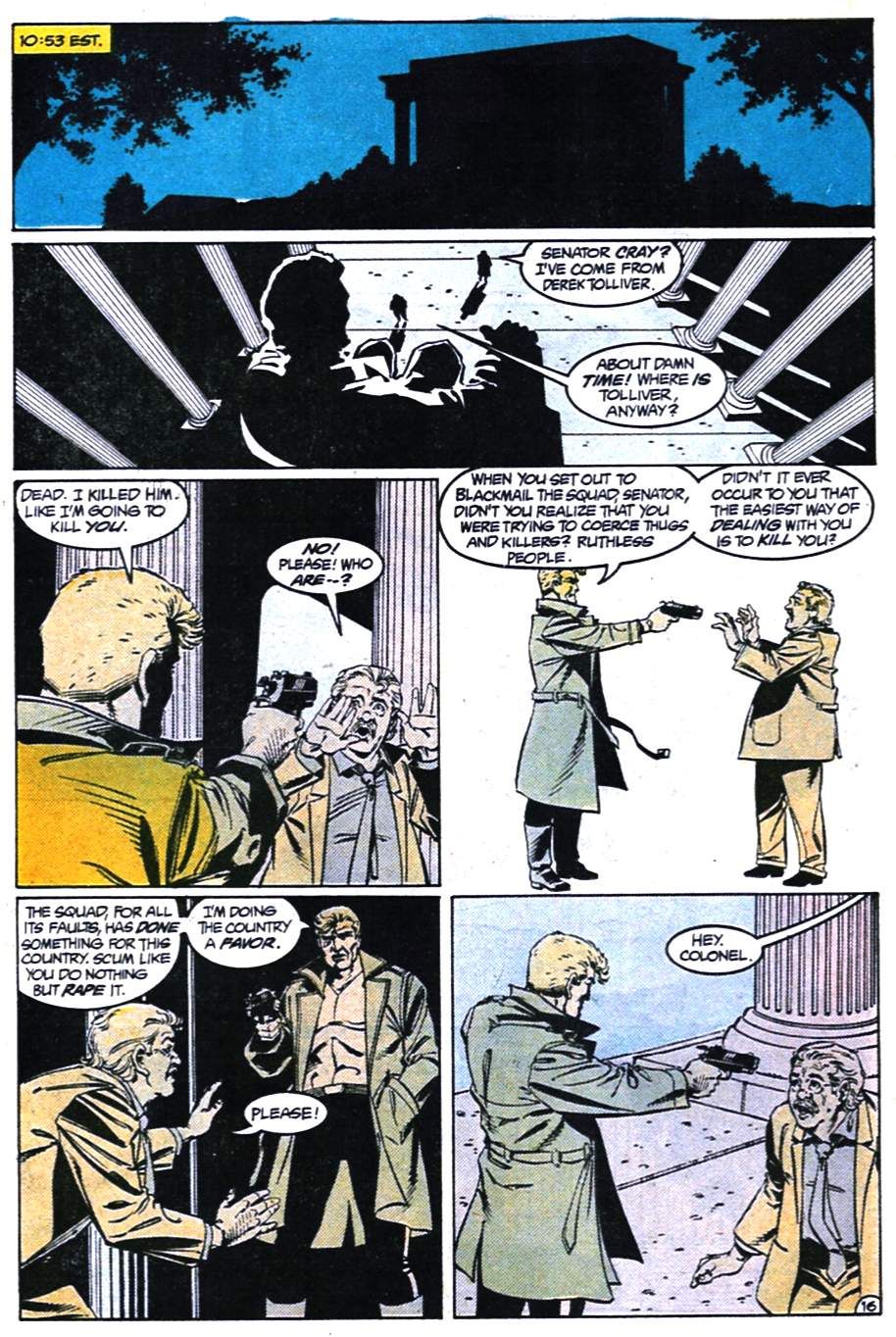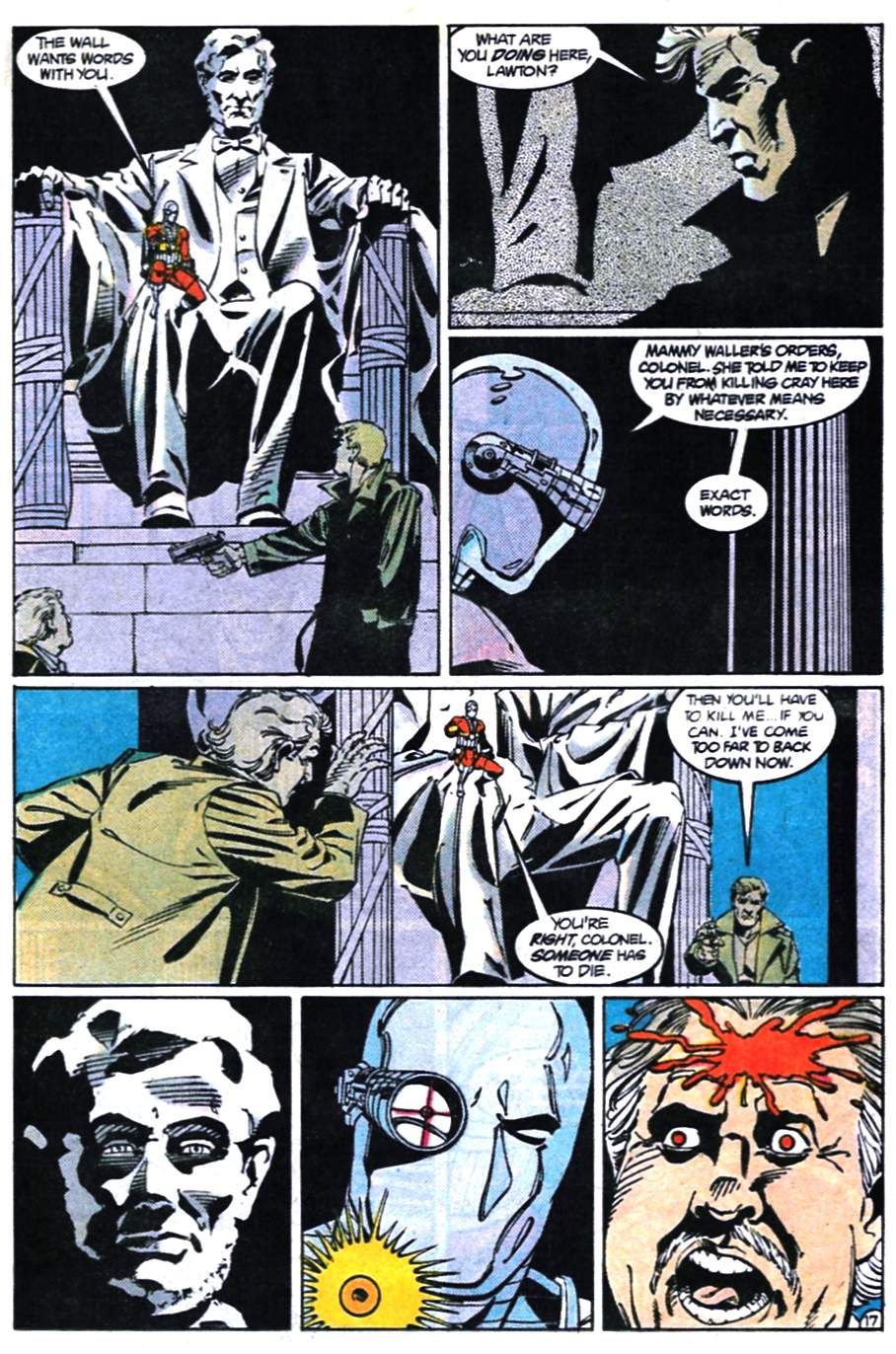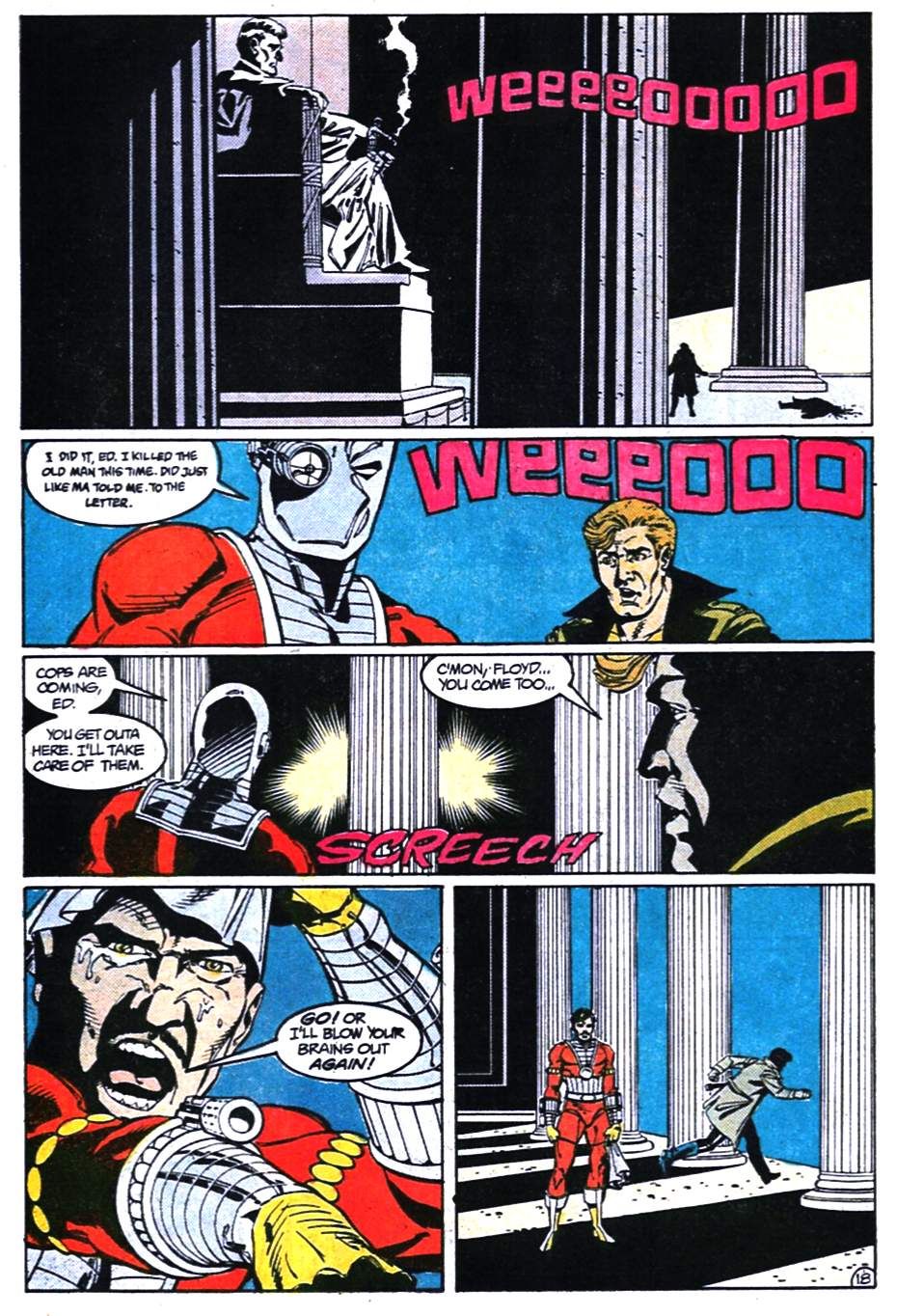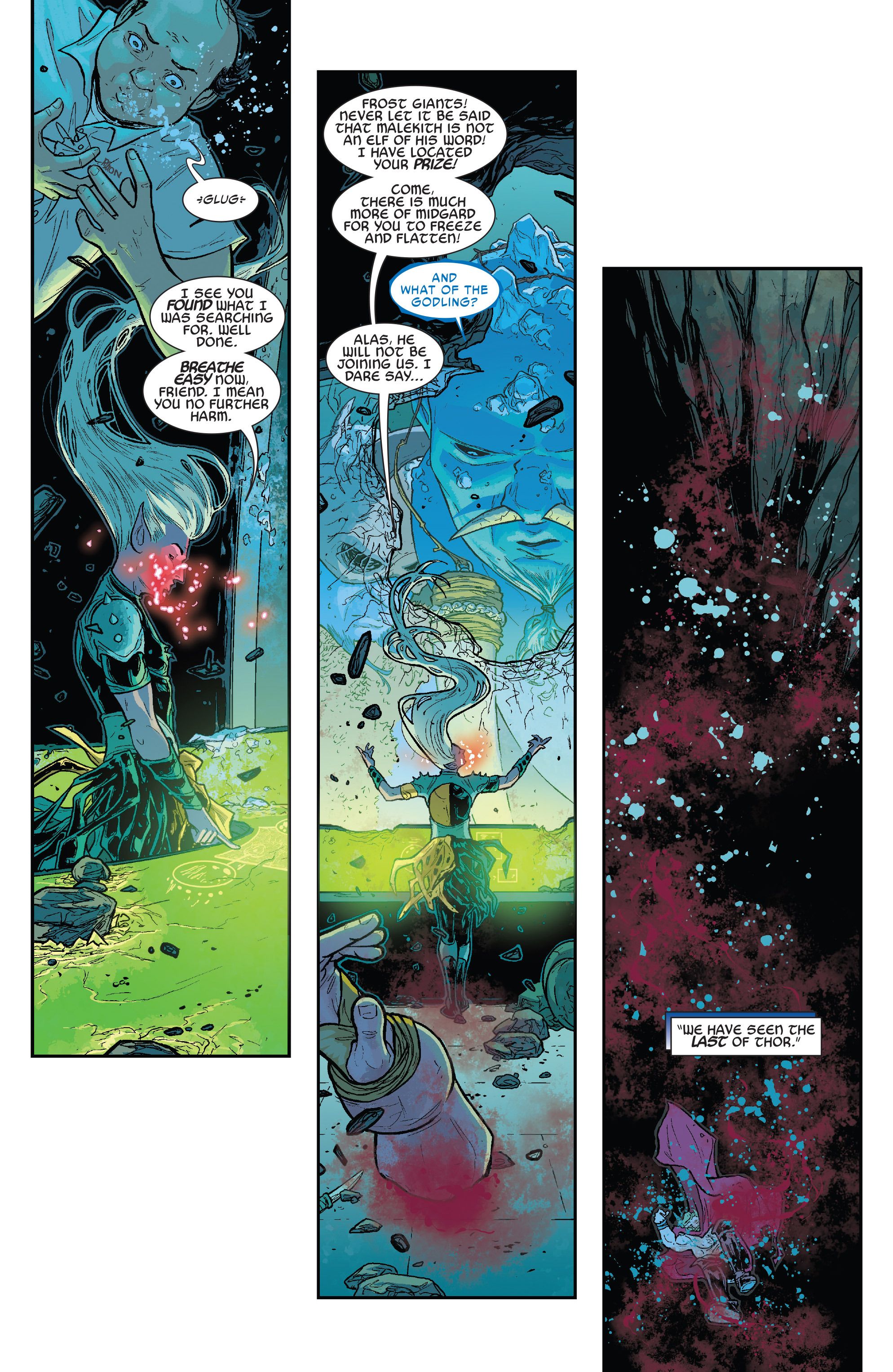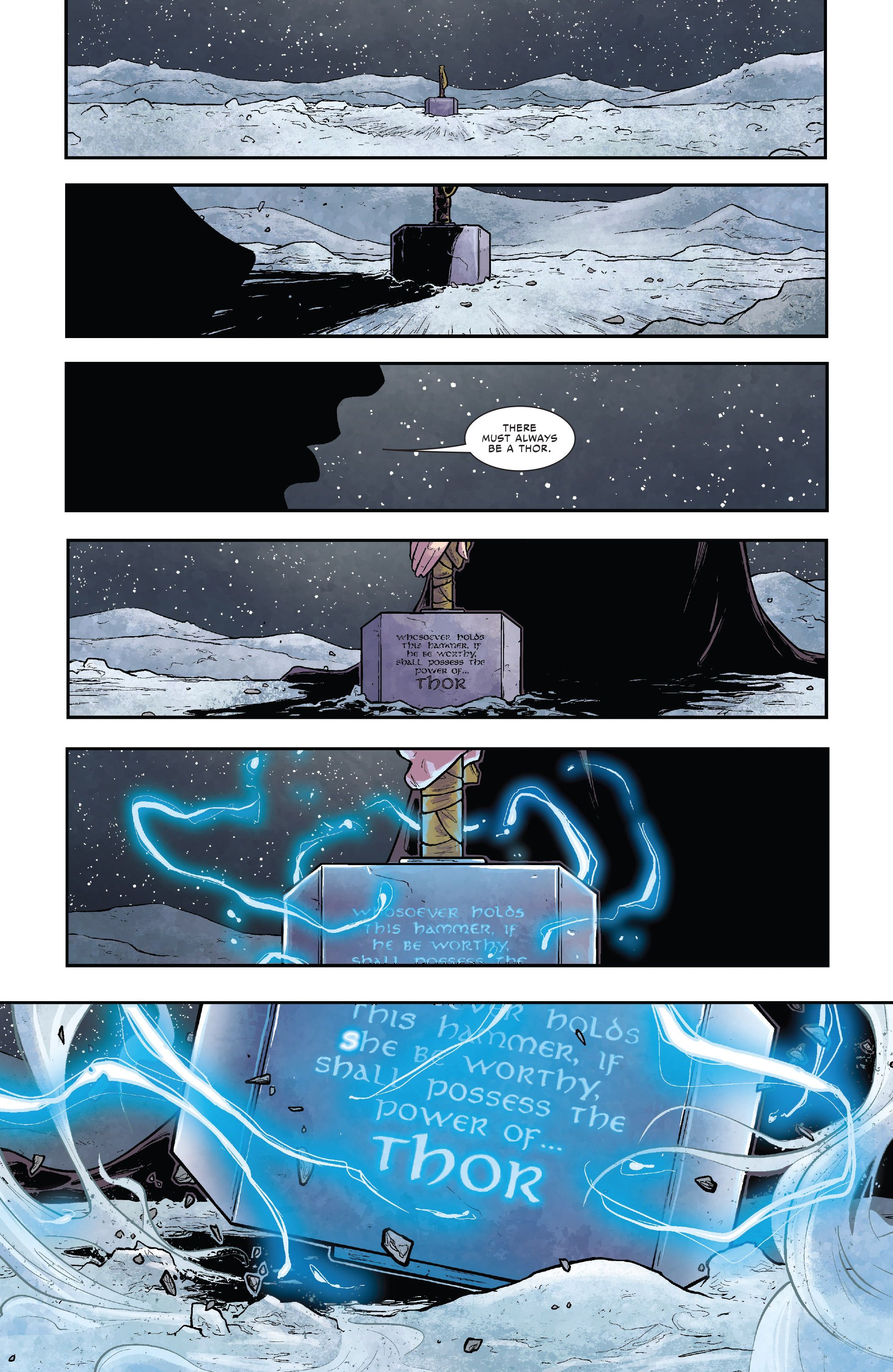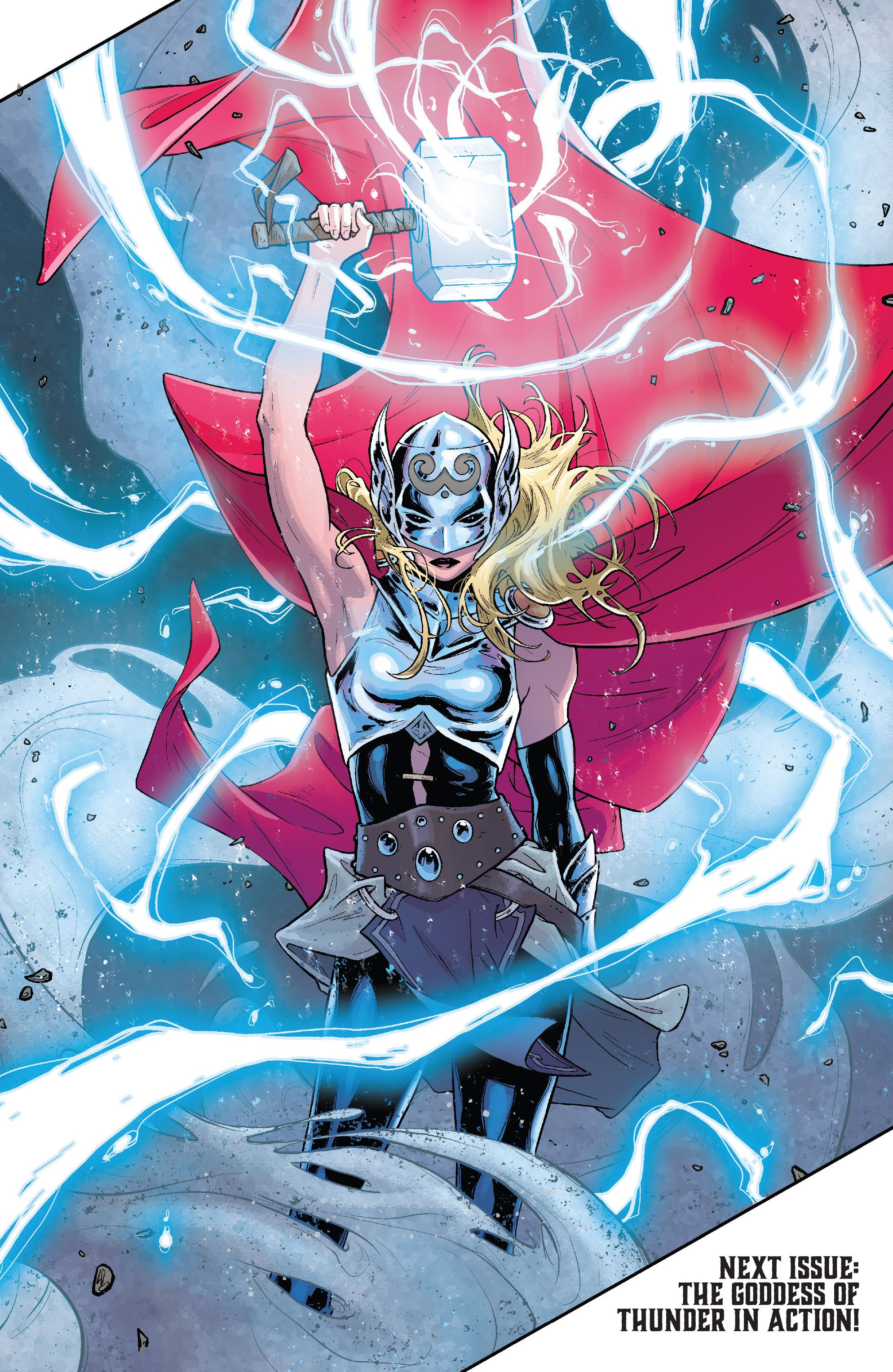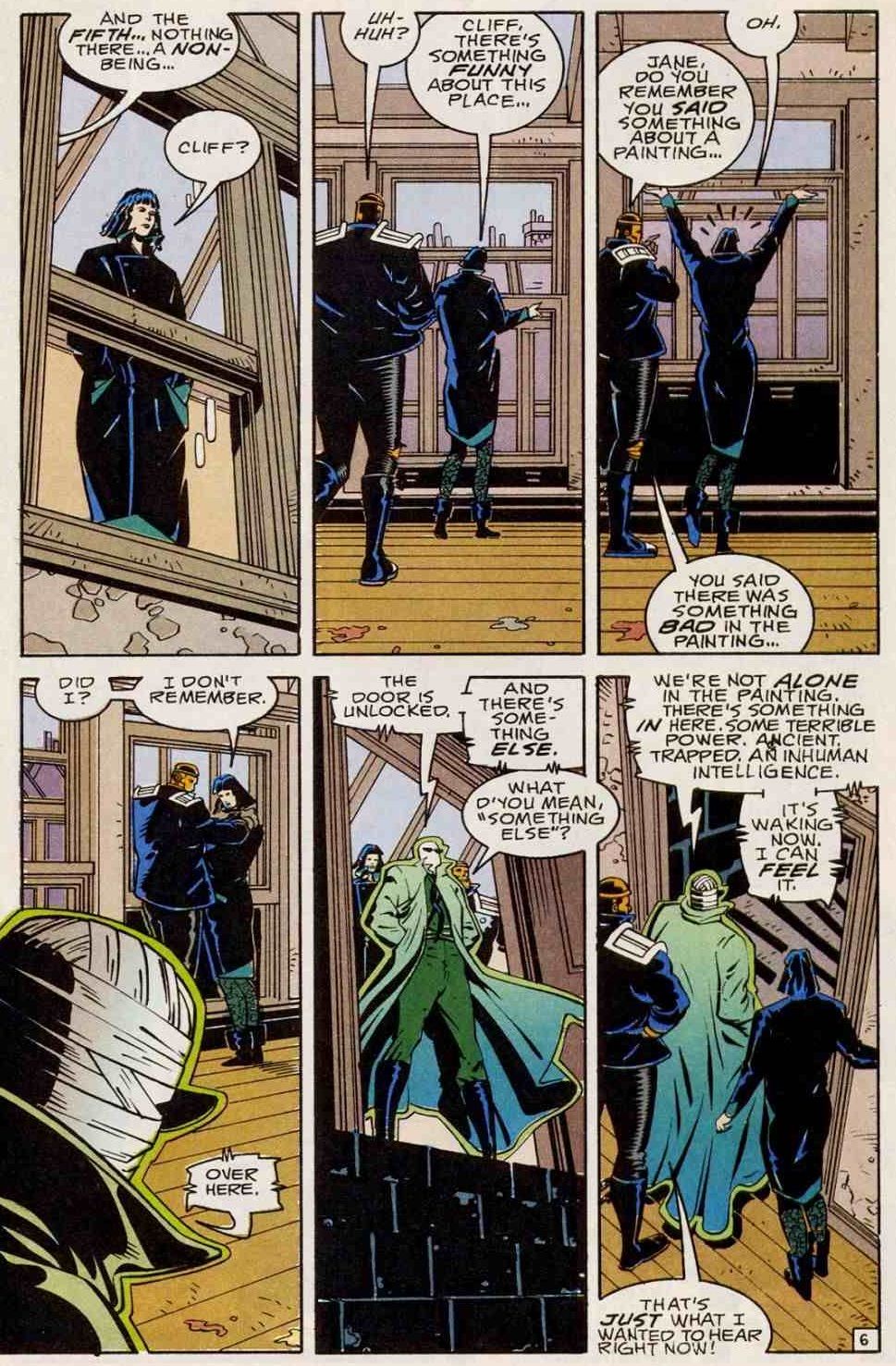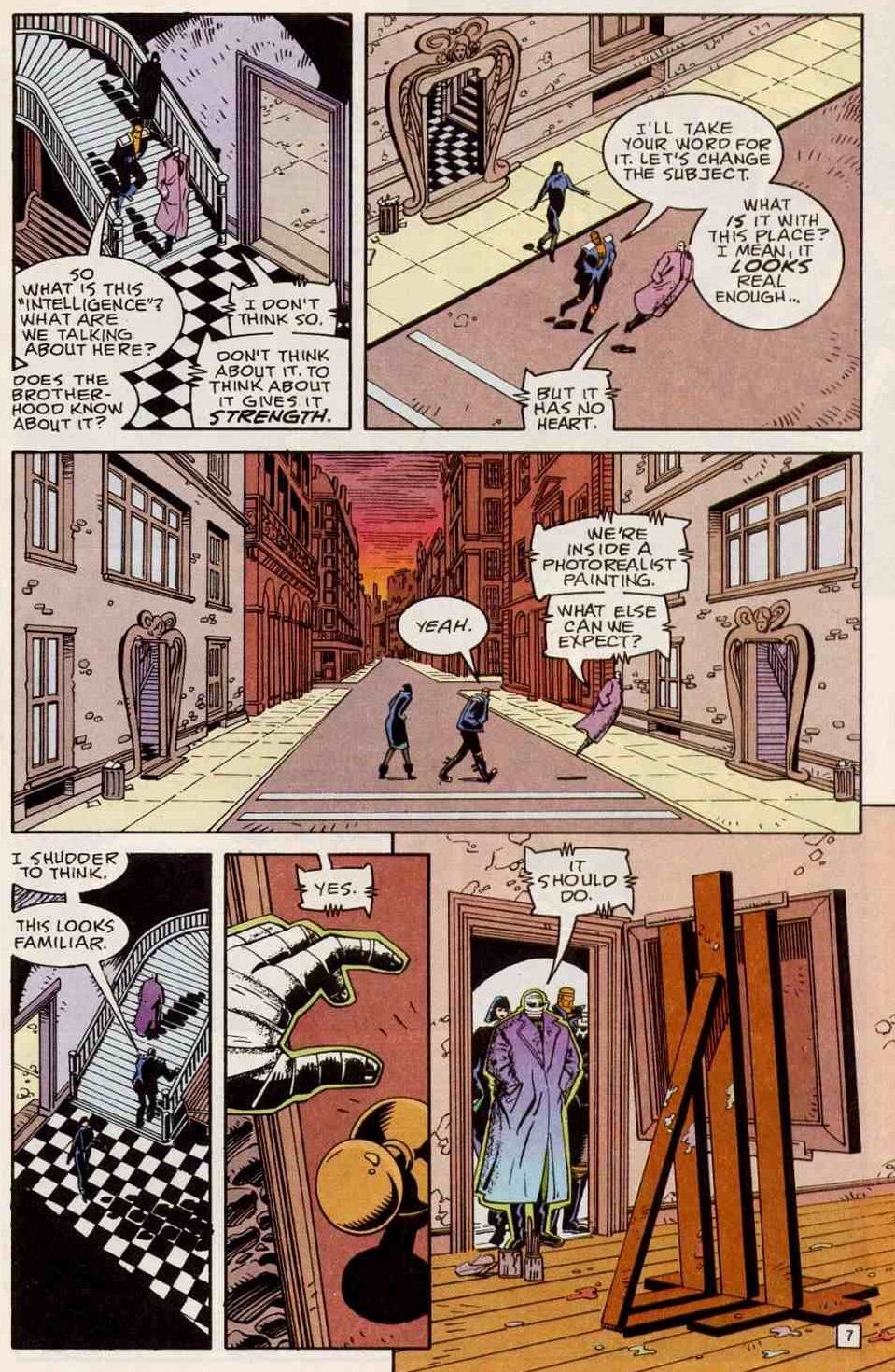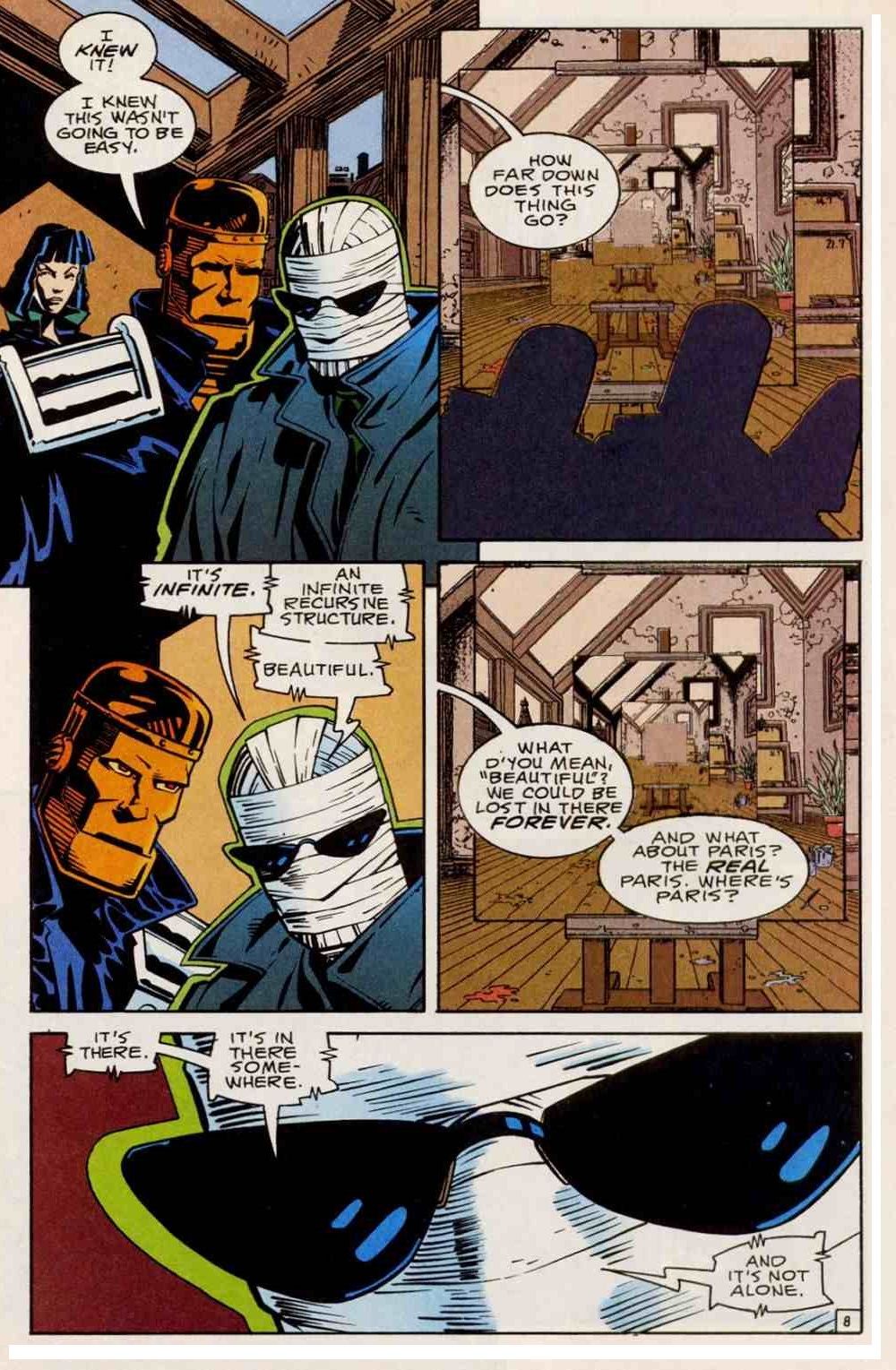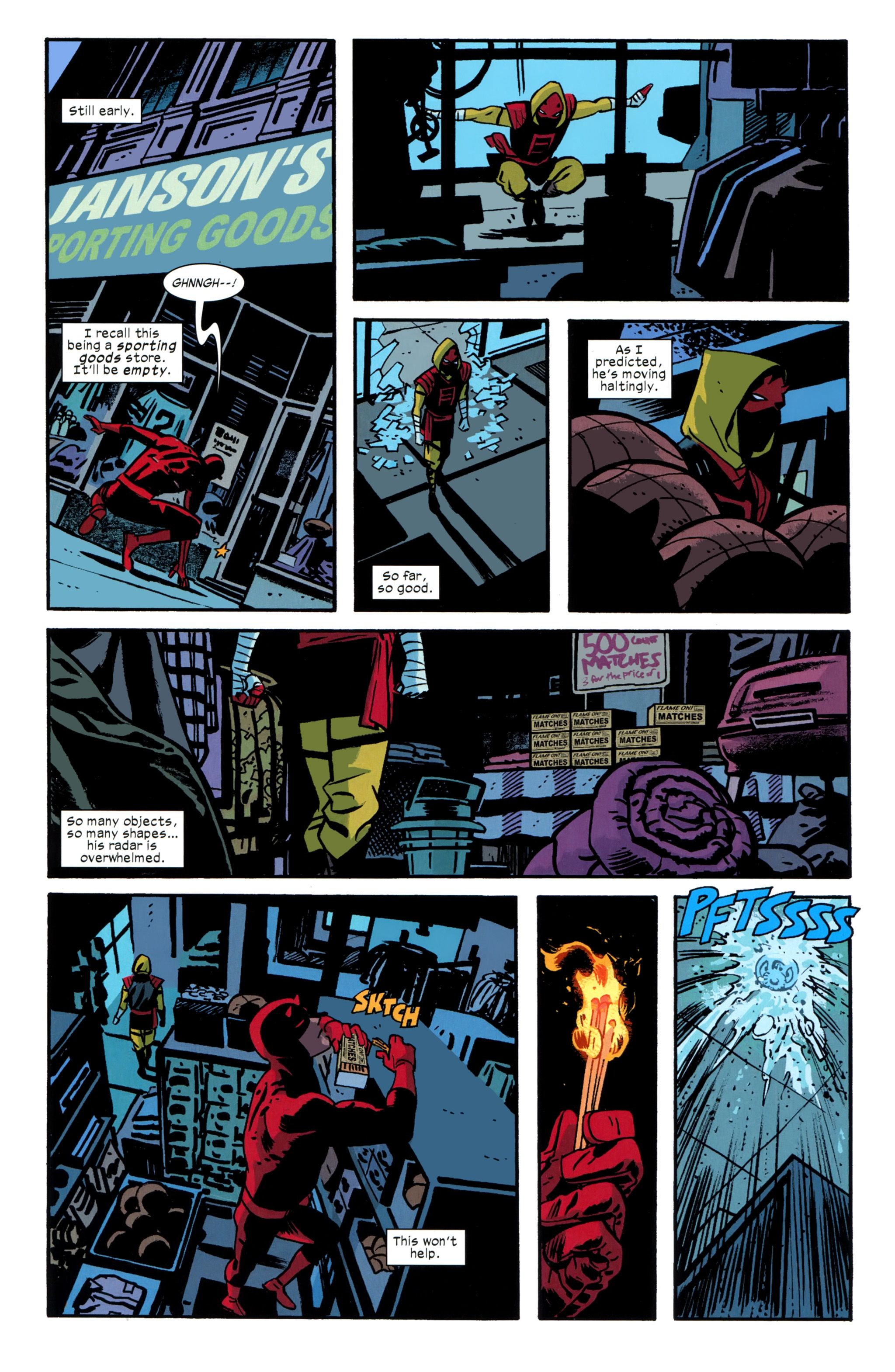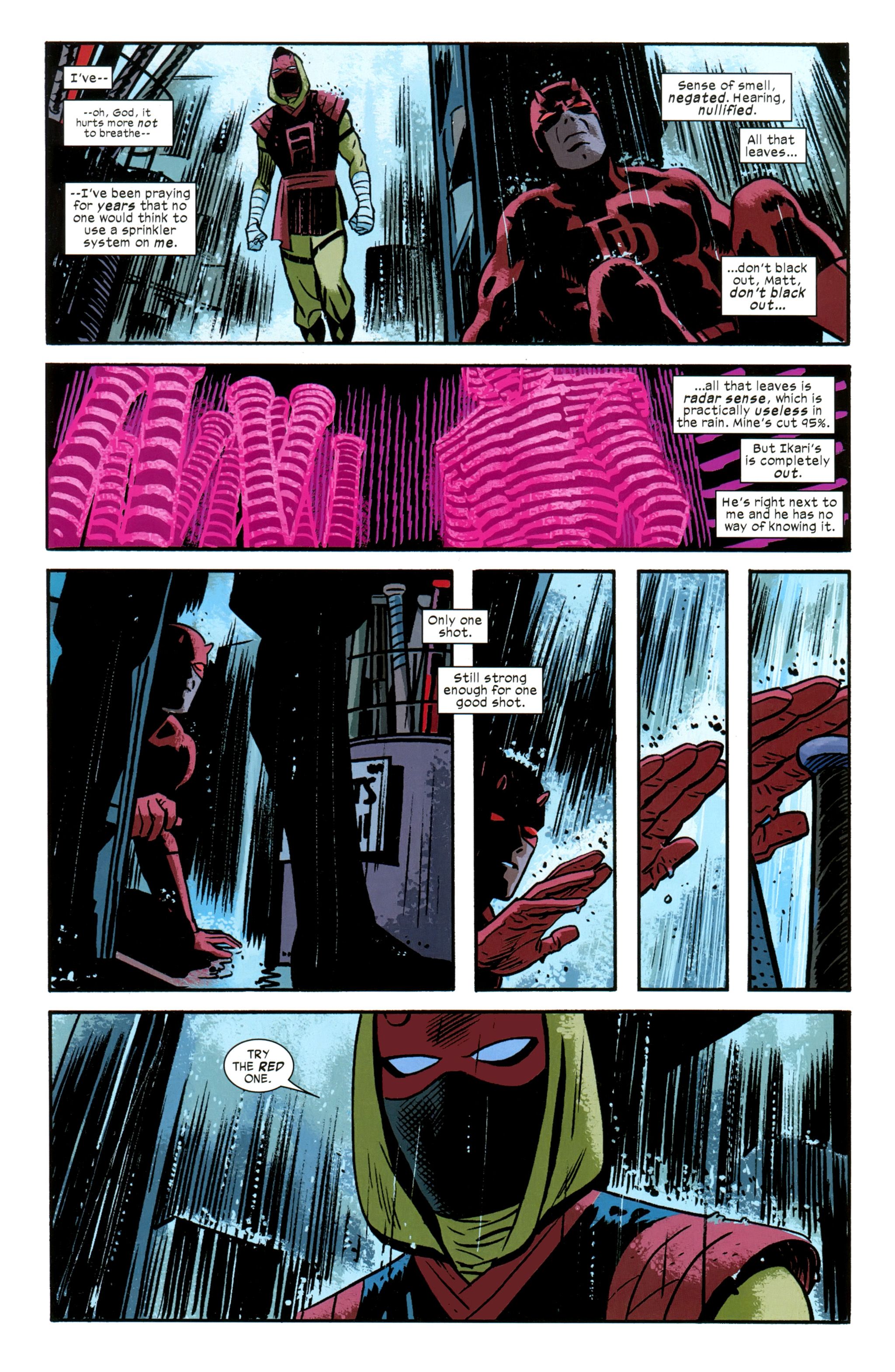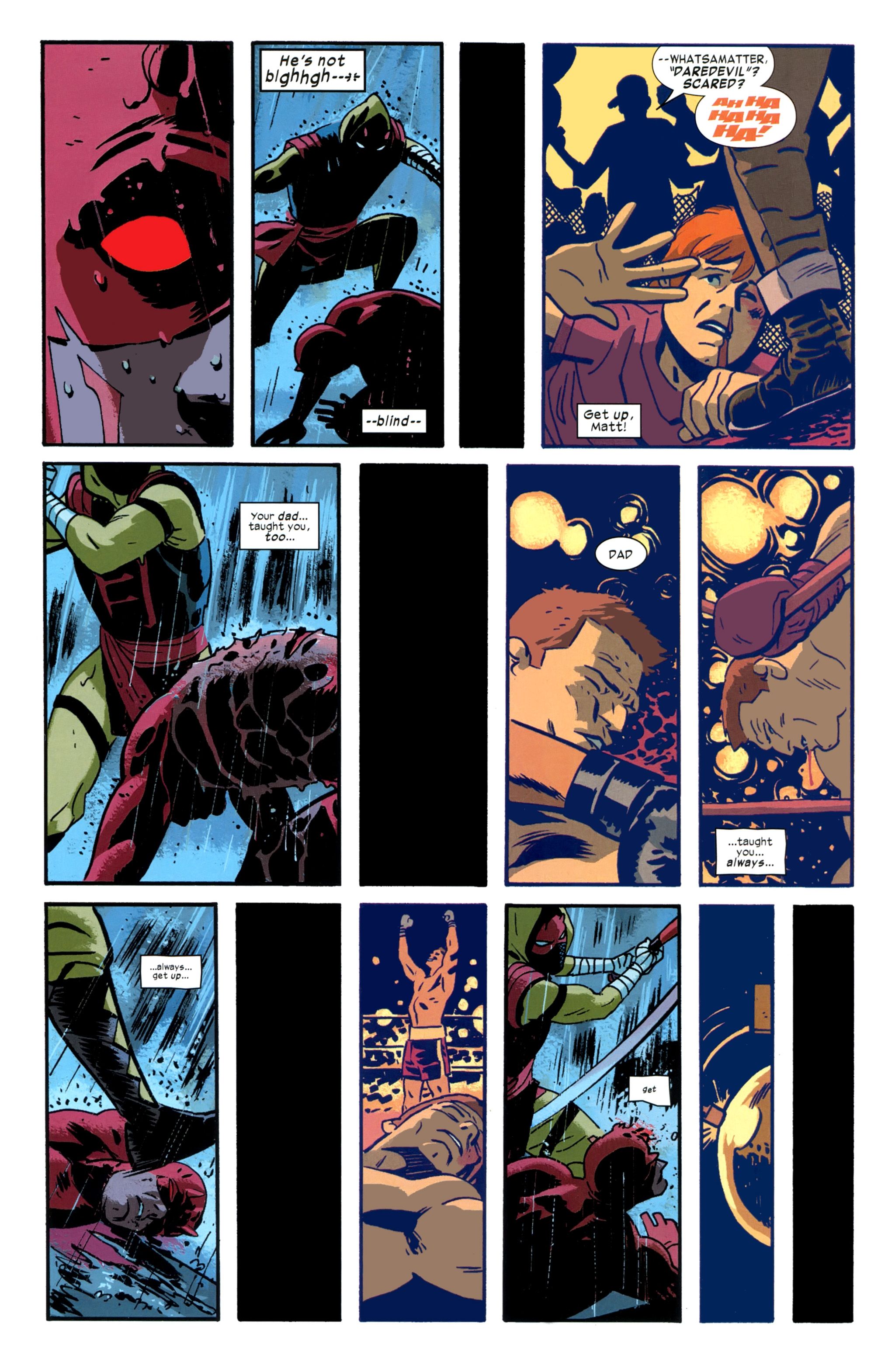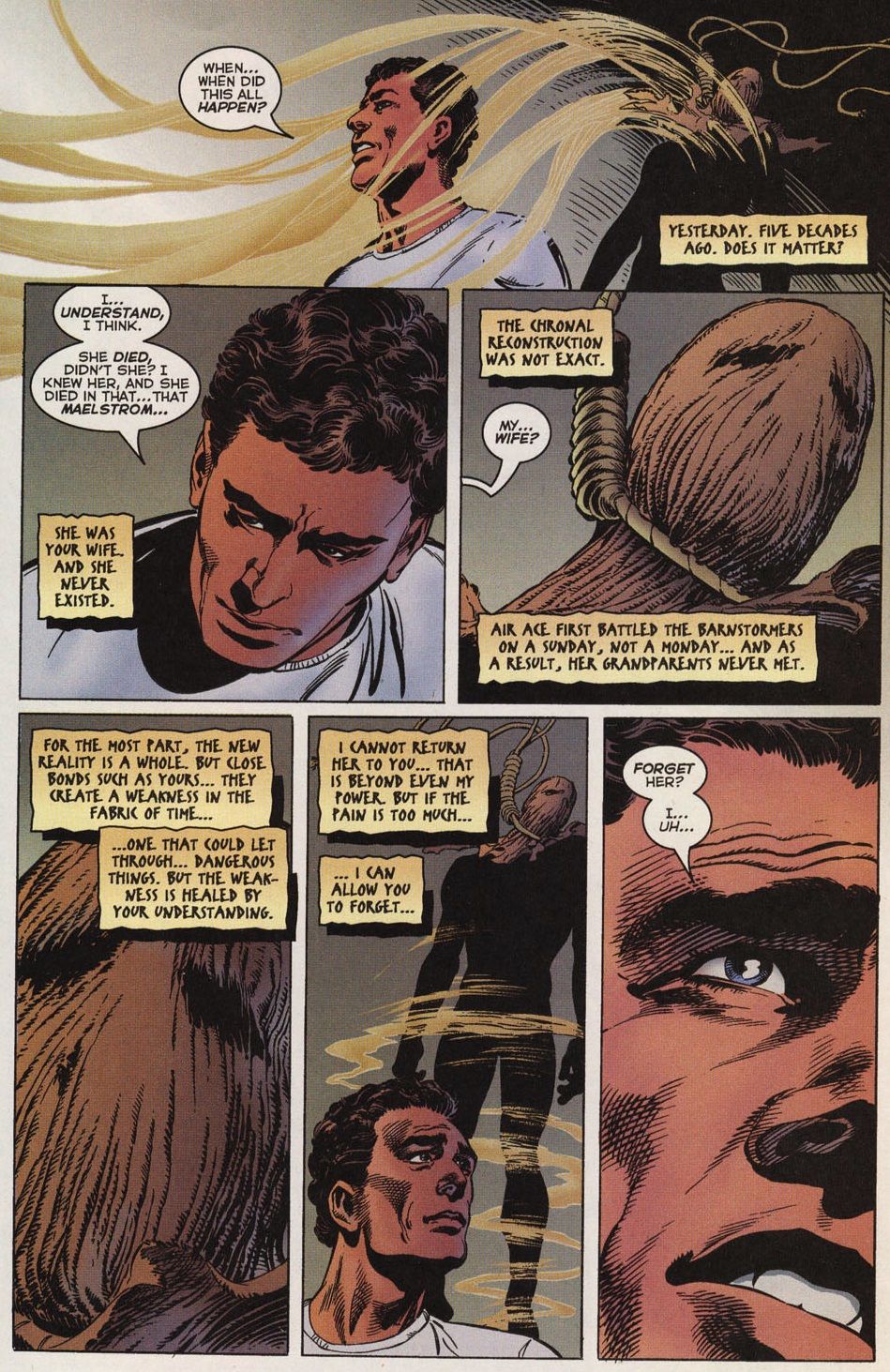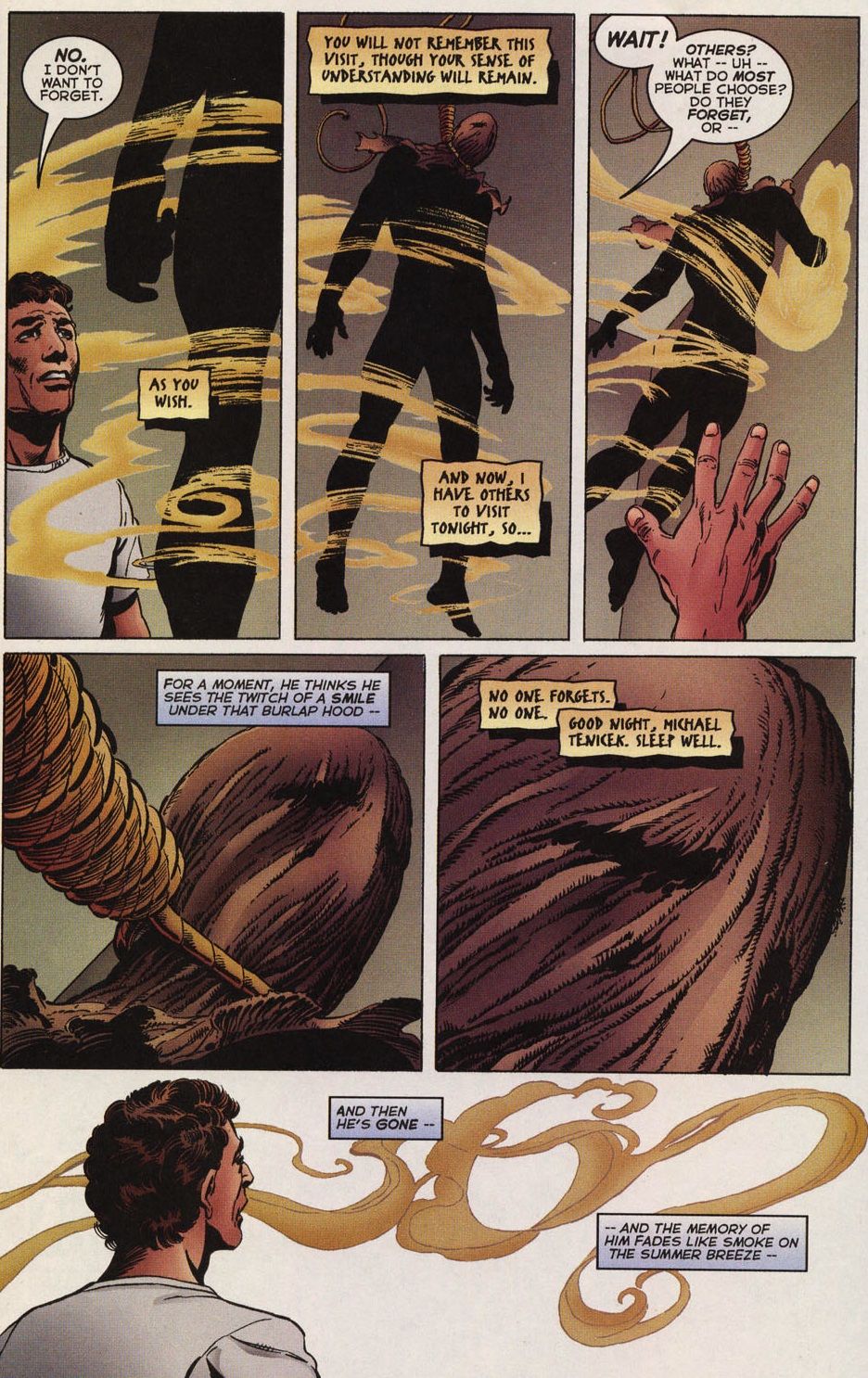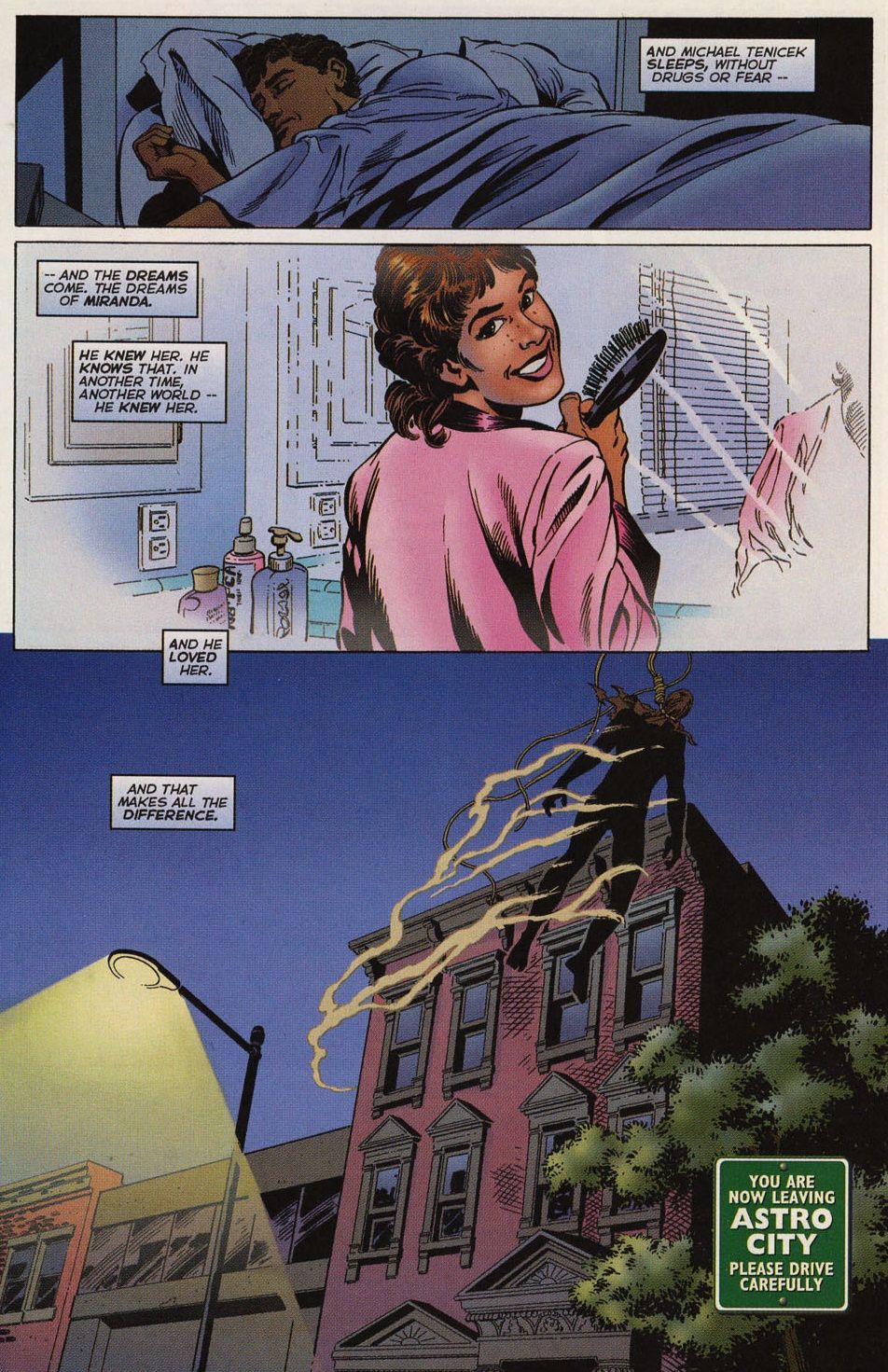You voted, and now, after over 1,000 ballots were cast, here are the results of your votes for your favorite comic book creator runs of all-time (this is the third time we've done this countdown. We're on an every four year schedule)!
To recap, you all sent in ballots ranking your favorite runs from #1 (10 points) to #10 (1 point). I added up all of the points and here we are! You can check out the previous installments in the countdown here.
40. Warren Ellis, Darick Robertson and Rodney Ramos' "Transmetropolitan" - 322 points (6 first place votes)
"Transmetropolitan" #1-60
Originally a part of a failed new line of comics (Helix), "Transmetropolitan" was soon the only comic left standing, and moved to Vertigo, where creators Warren Ellis and Darick Robertson told the adventures of journalist Spider Jerusalem (a tribute to the founder of “gonzo journalist,” the late Hunter S. Thompson) for five eventful years.
The basic concept of the series was simple – famed writer Spider Jerusalem has disappeared for five years, living a hermit existence, until the money he was paid in advance for writing two books dries up, and since he doesn’t have the books written, to avoid lawsuits, he returns to his job as a journalist to support himself while he finishes the books – and in the process, becomes involved in the life of The City once again.
The book is set in the future, although most of the events of the comic shadow events of the past, usually events from when Thompson first began reporting (so the late 60s/early 70s). Jerusalem has two female assistants who he refers to as his “filthy assistants.” The series is mostly built around the audience enjoying Jerusalem, a hilarious and cynical soul railing against the corruption of the future, a future so corrupt that someone like Jerusalem can truly be seen as a hero.
The series ended with a very cool twist ending.
39. Dan Slott's "Amazing Spider-Man"/"Superior Spider-Man" - 325 points (8 first place votes)
"Amazing Spider-Man" #648-700, "Superior Spider-Man" #1-31, "Amazing Spider-Man" (Vol.3) #1-18, "Amazing Spider-Man" (Vol.4) #1-21 (current)
One of the original team of writers who launched Brand New Day in "Amazing Spider-Man" #546, Dan Slott became the sole writer of Spider-Man with "Amazing Spider-Man" #648, which was the start of “Big Time.” He mostly has worked with artists Humberto Ramos, Stefano Caselli, Marcos Martin and Giuseppe Camuncoli during his initial run on the book.
Slott’s best traits on Amazing Spider-Man have been the way that he follows in the strong suit of past Spider-Man writers of mixing action-packed adventures with character-driven stories in a blend that feels like a natural extenuation of whatever is going on in the book at that time. So a big event where everyone on Manhattan gets Spider-powers is personalized by the fact that Peter Parker’s girlfriend at the time has the powers, too, and it leads her to figure out that Peter has been lying to her about his secret identity. Or, in one of the strongest one-shot issues of Slott’s run, "Amazing Spider-Man" #665, we see the trade-off for Spider-Man and Peter Parker both becoming so successful, which is that he is too busy for people like his closest friends. So when Betty Brant is assaulted after Peter stands her up for a standing movie date, Peter vows revenge (naturally) but what does that look like to his friends and family? Peter is out finding Betty’s assailant, but to everyone else, he is not there for Betty when she needs it the most.
Peter’s guilt was a major driving force in the brilliant “No One Dies” story that Slott did after the death of J. Jonah Jameson’s wife. Peter was haunted in his dreams at the people that he has “let” die in his life…
Slott shocked the world by having Peter lose his own body to one of his villains, Doctor Octopus, but it turned out that Peter's sense of responsibility was so strong that Otto was compelled to still be a hero in Peter's body, only he was going to be a SUPERIOR Spider-Man. "Superior Spider-Man" ended with Peter taking over again, although his life was in a very different place due to Otto's actions in his body. One of the things was that Peter's financial life was actually in BETTER shape, and he ended up founding the successful company, Parker Industries.
Currently, he is caught up in a new Clone Saga, with his friends and foes being effectively brought back to life via advanced cloning.
Slott balances big storylines with humor and character-driven work that is exactly what you want from the writer of one of your flagship titles.
38. Peter David's "Incredible Hulk" - 332 points (4 first place votes)
"The Incredible Hulk" #331-359, 361-388, 390-467
What was probably most consistent about Peter David’s run on the "Incredible Hulk" was that there was no consistency to the book, David was constantly taking the book in different directions, and it made for an eventful ride for readers.
When he took over the book in 1986, the book was in the middle of a storyline, but David picked it up without a hitch, and soon turned the book into a sort of odd road trip book, with Bruce Banner, Rick Jones and Clay Quartermain traveling together. At this time, the Hulk had become Grey again, and turned into the Hulk at night. During this time, Todd McFarlane was the artist on the book, and there was a notable encounter between the Hulk and Wolverine while on the road.
After an encounter with the Leader, the Hulk was feared dead, but he soon popped up in Las Vegas, working as a bouncer called Joe Fixit. Jeff Purves was the artist on these stories.
Eventually, Hulk hit the road again, and Dale Keown joined the book. He and David combined for an impressive run together, and during this run, David made probably his biggest change to the comic, having Doc Samson merge the various Hulk personalities (Banner, Grey Hulk and Green Hulk) together to form one powerful green Hulk whose personality was controlled by Banner.
This version of the Hulk was soon hired by the peacekeeping group, the Pantheon, to work for them as a peacekeeper. This was the status quo of the book for about forty/fifty issues.
However, this ultimately fell apart, too, and the Hulk went on the run once more, and then Onslaught happened, with Banner and the Hulk becoming separated – the Banner-less Hulk went on a bit of a rampage, but eventually Banner returned. Adam Kubert took over as artist for an acclaimed short run on the Hulk, and in his second-to-last issue, David had Betty Banner, wife of Bruce, die. David’s last issue had Rick Jones in the future looking back at all the various stories that David had had planned for his run before his departure.
David’s run was marked by a lot of character work, and also a lot of humor.
37. Bill Willingham, Mark Buckingham and Steve Leialoha's "Fables" - 340 points (5 first place votes)
"Fables" #1-150
"Fables" was Bill Willingham’s epic story concerning the adventures of the inhabitants of Fabletown, all characters who come from fairy tales and folklore, like Snow White, the Big Bad Wolf, Little Red Riding Hood, etc.
They live in Fabletown because they were driven out of the magical world that they used to live in (called the Homelands), by an evil villain known as the Adversary, who has conquered most of the Homelands.
The early stories followed mostly Snow White, who was the aide to the Mayor of Fabletown (Old King Cole) and Bigby Wolf (the Big Bad Wolf), who was the Sheriff of Fabletown, and their Sam and Diane relationship.
Here is a nice sampling from issue #14 showing the vast cast of Fabletown, as the Mouse Police (an elite mixture of Fable Mice, you know, like “Hickory Dickory Dock” and Lilliputians who team up to serve as an espionage squad for Bigby) investigate Bluebeard, while Bluebeard does a fencing exhibition against Prince Charming, while Snow White’s sister, Rose Red, is on the Farm (the special extension of Fabletown for those Fables who can’t mix with humans. Essentially, all the animal Fables)….
Later storylines revolved around the inevitable war between Fabletown and the Adversary’s forces.
While the storylines of the book resulted in the basic framework of the comic, the key to the book was the character work that writer Bill Willingham did with the characters. To this end, he was greatly helped by the addition to the book of artists Mark Buckingham and Steve Leialoha with the second storyline (with some breaks here and there, Buckingham and Leialoha remained the artists of the book for the rest of the series). Buckingham’s attention to characterization is perhaps his greatest artistic talent.
Willingham slowly developed characters, and moved them from small roles to big roles without any real warning (the two most famous examples of this were Flycatcher and Boy Blue), so pretty much every character in Fables could be considered the star of the book.
36. Mark Waid's first "Flash" run - 341 points (3 first place votes)
"Flash" #62-129, plus a #0 (#118-129 co-written with Brian Augustyn, and interestingly enough, the book actually changed titles from "Flash" to "The Flash" at #101)
Mark Waid burst on the scene with "Flash" by giving readers “Kid Flash – Year One,” which was a touching tribute to the beginnings of Wally’s career, and a clear note that Waid’s stories were going to be ones that stressed characterization first.
One piece of characterization that Waid picked up from outgoing writer, Bill Loebs, was the relationship between Wally and his friend, Linda Park. Loebs had slowly built up an intriguing friendship between the two, but it was Waid who made the friendship a full-fledged romance, leading to the centerpiece of Waid’s run on Flash – the love between Wally and Linda.
After a storyline with Abra Kadabra, Waid launched probably his most memorable storyline, where he had Barry Allen seemingly return from the dead. Seeing Wally’s reactions to both Barry’s return and the realization that bad things were happening was probably the point where Waid’s Wally West became a true adult. It was a beautiful coming of age storyline, and it also introduced Max Mercury, a cool new character that Waid had come up with, a zen-like fellow (who is ostensibly based on some old Golden Age hero).
Waid’s next big storyline introduced Impulse, the young cousin of Wally from the future, who was raised in virtual reality, so he had, well, an impulse problem. Young Bart Allen became Wally’s sorta sidekick, and soon gained his own spin-off title (bringing Max with him as his guardian).
Perhaps the masterstroke of his run was the development of the “Speed Force,” an almost mystical energy field that gave all speedsters their powers. During a big storyline leading up to #100, Wally was absorbed into the Speed Force, leaving Bart and the other speedsters (Johnny Quick, Max Mercury, the Golden Age Flash, Jay Garrick, and Johnny Quick’s daughter, Jesse) to defend the Flash’s city, along with Linda (she is the narrator of the issue, and she makes a point to note that she no longer believes in miracles after Wally’s death).
However, Flash manages to pull himself out of the force, all based on the power of his love for Linda.
Awwww….
After that moment, the book’s momentum slows a bit for the rest of Waid’s run. There’s a storyline with this guy who can steal the Speed Force from people, and then there’s a story where Wally gets lost in time and replaced by John Fox, the Flash from the future, who is a bit of a jerk. Then there’s a few short storylines before Waid and Augustyn (originally Waid’s editor on the book, and became his co-writer with #118) took a break with #129. They would return in a year’s time for a new run that ended with #159 (#162 for Augustyn), and the marriage of Wally and Linda. Waid would return years later in #231 for a short run with Wally, Linda, and their two children (who also had powers).
Waid began the book with incumbent artist, Greg LaRocque, who stayed on the book until the end of the Return of Barry Allen. The late, great Mike Wieringo would take over, and draw the book for about 20 issues or so, helping to create Impulse with Waid. After #100, Waid had a string of young artists work on the book (most of whom would go on to big things after their time on Flash, like Salvador Larroca and Jimmy Cheung), and his first run finished with Paul Ryan supplying the artwork.
35. John Ostrander's "Suicide Squad" - 344 points (10 first place votes)
"Suicide Squad" #1-66
"Suicide Squad" was a rare comic that stars mostly supervillain characters, although with some superhero characters mixed in, and it is quite impressive that it managed to last five whole years, and wow, what a good five years it was.
Based on an old comic series (which was a backup in "Brave and the Bold" in the late 50s) that was a lot like the Challengers of the Unknown, the Suicide Squad was a group of adventurers who had missions that one would term were, well, suicide missions.
When he joined DC in the late 80s, writer John Ostrander revamped the series as a "Dirty Dozen"-style comic, where a group of supervillains were given time off (or their freedom outright) if they would go on missions for the government.
The head of this group was a new creation, a middle-aged, stout black woman named Amanda Waller (the “Wall”), who was one of the most engrossing new characters that DC had at the time. Due to the fact that the members could easily die, membership in the Squad was always changing, although there were a few members who hung around for mostly the whole run, such as Captain Boomerang, Deadshot, and the heroic Bronze Tiger and Vixen.
The book had a lot of political storylines, and had a LOT of great action stories, but what the book is probably most remembered for is the character work that Ostrander did with these characters, who were such minor characters (or new ones, entirely) that he was able to do whatever he wanted with them, so he was able to make them, well, HUMAN – and it was such a great thing to see. He would routinely have “downtime” issues, where we would see the characters when they were NOT on missions.
Deadshot became a major character in the DC Universe thanks to "Suicide Squad," even gaining his own mini-series. In one of the series most classic moments, Amanda Waller sends the Squad after rogue member Rick Flagg. She tells Deadshot to stop Flagg from killing a Senator by any means necessary. Let’s see how he took that instruction to mean…
The pencilers on the series were Luke McDonnell for the first half of the run, and Geoff Isherwood for the latter half of the run (with a number of fill-in artists, as well).
The book inspired a new "Suicide Squad" series in the New 52 and it led to a hit film.
34. Jason Aaron's "Thor" - 350 points (6 first place votes)
"Thor: God of Thunder" #1-25, "Thor" (Vol.4) #1-8, "The Mighty Thor" (Vol.2) #1-13 (current)
Jason Aaron's "Thor" run began with a fascinating and multi-faceted epic storyline (mostly drawn by Esad Ribic) that featured the God Butcher, a twisted being whose only meaning in life was killing off gods. The storyline deal with Thor at three different points in his life. The present day Thor, the Thor of the past and the Thor of the far off planet. All three of them tied together in the story, but each one was also given unique stories, as well.
Once that initial epic story (which took up roughly the first year or so of the series), Aaron would then split his time between the three different eras of Thor. In the present, he introduced Roz Solomon, a SHIELD agent and new love interest for Thor.
However, towards the end of the first volume, during the "Original Sin" crossover event (also written by Aaron), Thor discovered a hidden secret about himself that left him unworthy of wielding Mjolnir anymore. He ceded the name Thor, as well, choosing instead to be referred to as the son of Odin, or Odinson.
Without Odinson around to be Thor, it ended up being Thor's old love interest, Jane Foster, who stepped in and became the new Thor...
Aarron and the brilliant Russell Dauterman launched a new "Thor" series starring Jane as Thor. After "Secret Wars" caused all titles to start over, Aaron and Dauterman (who is just an amazing artist) launched a new volume of "The Mighty Thor" starring Jane, who not only has to deal with all the typical problems that Thor has to deal with, but also with the fact that Odin himself has decided that Jane is not worthy of being Thor - but Mjolnir has evolved and no longer answers to Odin.
It's fascinating stuff, especially as Aaron continues to develop Odinson, as well (he appears in the current mini-series, "The Unworthy Thor").
Aaron's ability to juggle multiple plots at once gives his "Thor" Run an esceptional amount of depth and complexity. It will be fascinating to learn what, exactly, made Odinson "unworthy" in the first place.
33. Grant Morrison's "Doom Patrol" - 361 points (4 first place votes)
"Doom Patrol" #19-63 (plus "Doom Force" #1, I suppose)
Arnold Drake created the Doom Patrol to be the world’s strangest superheroes, but by the time Grant Morrison took over the book, the second generation of the Doom Patrol were more of a half-hearted attempt at duplicating the success of the All-New, All-Different X-Men. Morrison decided to embrace the concept of the world’s strangest superheroes, and he gave the world a title that was strange, all right, but strange coming from the mind of Grant Morrison.
Outgoing writer Paul Kupperberg was kind enough to remove most of the members of the team for Morrison, as Morrison was really only interested, amongst the main cast members of the book, in Niles Caulder and Cliff Steele (although Josh Clay, a member of Kupperberg’s team, also stuck around, as the team doctor – Morrison would use him as the lone voice of sanity among all these bizarre goings-on, but sadly, as you might imagine, the one sane guy doesn’t stand much of a chance in a book like this). That said, Morrison DID bring back a minor character from early in Kupperberg’s run, the powerful girl with “imaginary” friends and a face like an ape, Doroty Spinner. New team members were Crazy Jane, who had different powers for each one of her split personalities and Danny the Street, who was, well, a street.
Morrison used the group to explore various secret groups, all with an idea for making the book as bizarre as possible. The great thing about it was that Morrison slowly made the book weirder and weirder as he went along, so the first issues are fairly normal, but if you compare his early issues to the end of his run – it’s like night and day.
Morrison used all sorts of different ways of telling stories, as well as doing a number of parodies, most notable of all, the Charles Atlas take-off, Flex Mentallo (who would later gain his own spin-off mini-series by Morrison and Frank Quitely). Some of the bizarre characters included the evil Scissormen, the Brotherhood of Dada, and one of Dorothy’s scariest creations, the Candlemaker.
Here is when the Doom Patrol had to solve the case of the Painting that ate Paris…
Towards the end of his run, Morrison spun the book around on its head, with a member of the group revealing a dark secret. By the time he left, he did not leave really much for incoming writer Rachel Pollack to do – the book really ought to have just ended with Morrison’s last issue, the book by the point of his departure was so indubitably his, and he took most of the coolest characters with him as he departed. Not that Pollack didn't do a poor job, just that it was a rough assignment for anyone.
32. Mark Waid's "Daredevil" - 376 points (2 first place votes)
"Daredevil" (Vol. 3) #1-36, "Daredevil" (Vol.4) #1-18
Matt Murdock has dealt with many inner demons over the years, but none so demonic as the ones that haunted him at the end of "Shadowland." His life has seen so many strange, dark turns that the only way he saw out was to embrace the light, even if it was just himself trying to convince himself that everything is okay.
Mark Waid’s Daredevil was, in a lot of ways, a throwback series, but one that KNEW that it was a throwback series, a book that was about a man trying to embrace his past life while trying to ignore the darkness inside.
Waid was joined on this series by a series of astonishing artists, most notably the original art team of Paolo Rivera and Marcos Martin (who traded off issues) and then Chris Samnee, who was so strong on the book that I really should have this listed as "Mark Waid and Chris Samnee's 'Daredevil'," but since the run made the Top 100 four years ago when Samnee's tenure had barely begun, I think it's a bit of a disservice to just how popular that first year was on the book (when Rivera and Martin were the artists).
In fact, it was an issue by Rivera (inked by his father, Joe Rivera) that won the book an Eisner Award for Best Single Issue, as Matt Murdock was taking a group of blind kids on a winter retreat in the Catskills when their bus crashed and the bus driver was killed. Trapped in the wilderness, Matt Murdock must do whatever he can to save the kids.
During his run with Samnee, the creators introduced a new villain named Ikari who had powers like Daredevil, but with a slight twist...
Waid is always great with character-driven work, and that was very much what his Daredevil was, while also having over-the-top superhero adventures, as well.
He and Samnee took Daredevil to San Francisco for a new volume that ended after 18 issues. They're now working together on a great "Black Widow" series.
31. Kurt Busiek and Brent Anderson's "Astro City" - 402 points (14 first place votes)
"Kurt Busiek’s Astro City" #1-6, "Kurt Busiek’s Astro City" Vol. 2 #1-22 (plus a #1/2), "Kurt Busiek's Astro City" (Vol.3) #1-40 (current), "Astro City: Local Heroes" #1-5, "Astro City/Arrowsmith: The Flip Book" #1, "Astro City Special: Supersonic" #1, "Astro City: The Dark Age: Book One" #1-4, "Astro City: The Dark Age: Book Two" #1-4, "Astro City Special: Samaritan" #1, "Astro City Special: Beautie" #1, "Astro City Special: Astra" #1-2, "Astro City: The Dark Age: Book Three" #1-4, "Astro City Special: Silver Agent" #1-2, "Astro City: The Dark Age: Book Four" #1-4
"Astro City" was, in many ways, a follow-up to Kurt Busiek and Alex Ross’ acclaimed mini-series, "Marvels," their tribute to the Golden and Silver Age of Marvel Comics. "Astro City," too, was a bit of a tribute to that spirit, as, through a series of semi-analogous characters, Busiek repeated the formula that made Marvels such a popular book, having the stories of "Astro City" told mostly from “Point of View” characters, although sometimes, the superheroes themselves were the point of view characters!
Astro City, which is the actual city in the book, is filled with a ton of superheroes, and Busiek takes his time introducing readers to them over the long run of the title (it’s been going on since 1995, although it has been on a bit of a hiatus since 2010). Helping him on his journey is Al, an observer from his own time, who appears in the form of a hologram…okay, actually, artist Brent Anderson, and Alex Ross, who helped design the superheroes of "Astro City," as well as draw the covers for the book.
What makes the book so notable is the way that Busiek really seems to grasp the depiction of a standard person, and how awing it must be to live in this world of superheroes, without ever really going to the cynical, “well, if superheroes actually existed, all sorts of bad stuff would happen” routine, which is greatly appreciated.
In a classic issue, we see the human side of stuff like "Crisis on Infinite Earths." We meet a man who lost his wife after a villain messed with time. His wife was erased from history and now he is haunted by dreams of her. He is met by a hero who explains the situation…
Wow, talk about powerful storytelling.
Perhaps the two most notable heroes in "Astro City" are Samaritan, the Superman analogue, who Busiek gave an origin so great that it was later an inspiration for the ending of Red Son, and The Confessor, who we learn has a tragic secret that makes his heroism even more notable.
Busiek and Anderson have been doing "Astro City" on a fairly regular basis for Vertigo the last few years, and every time around, you know you are going to get a well-told story with deep humanity.

